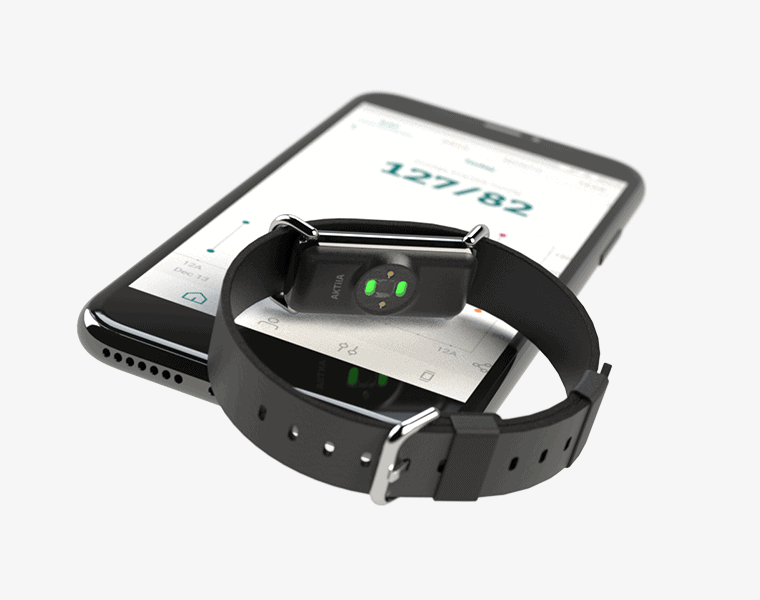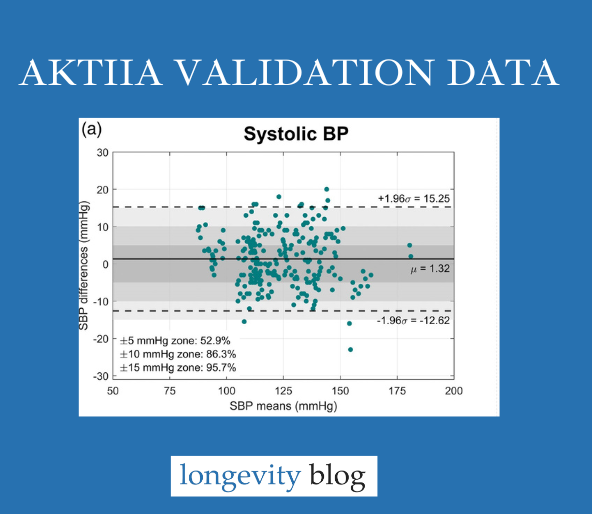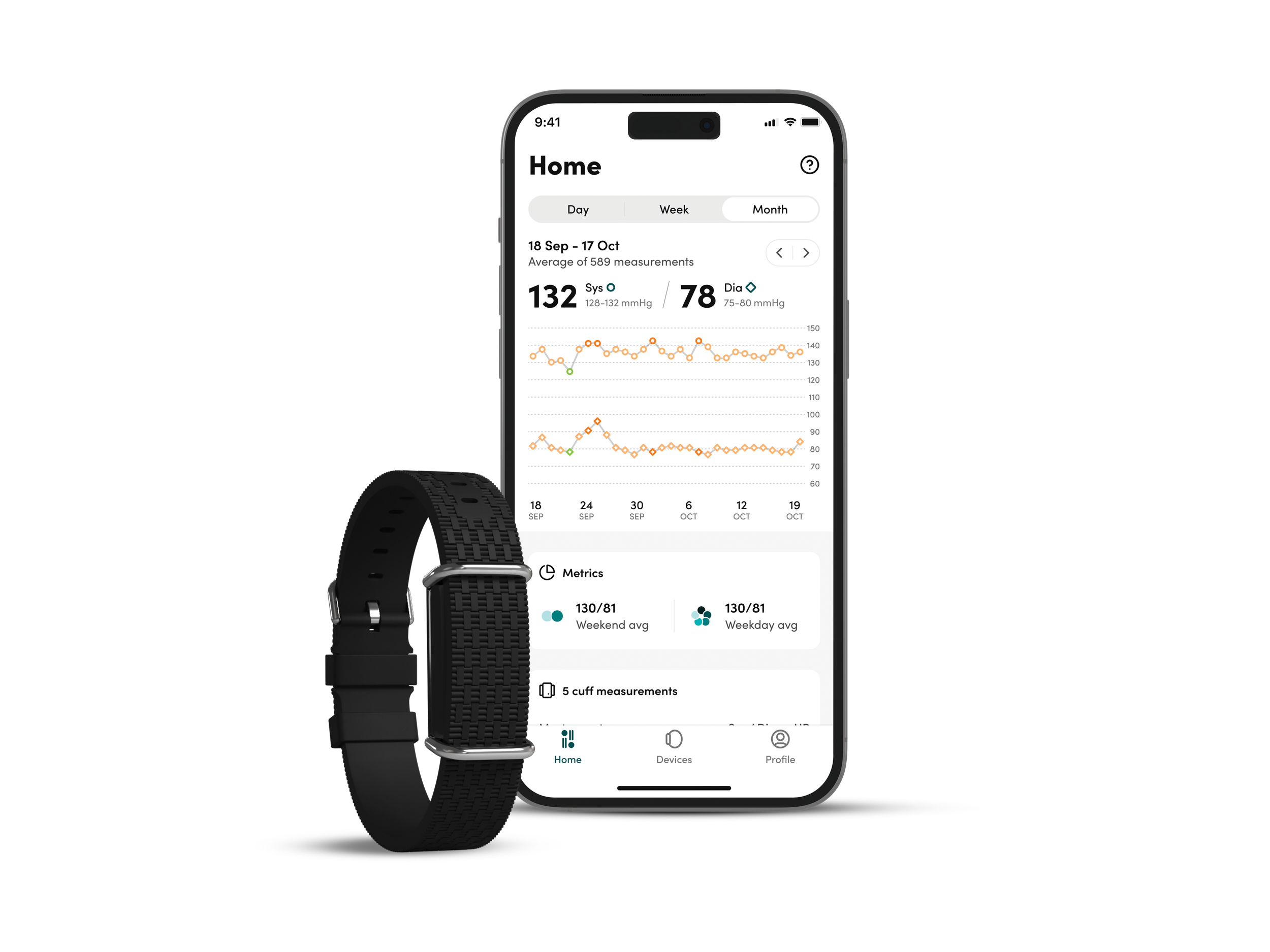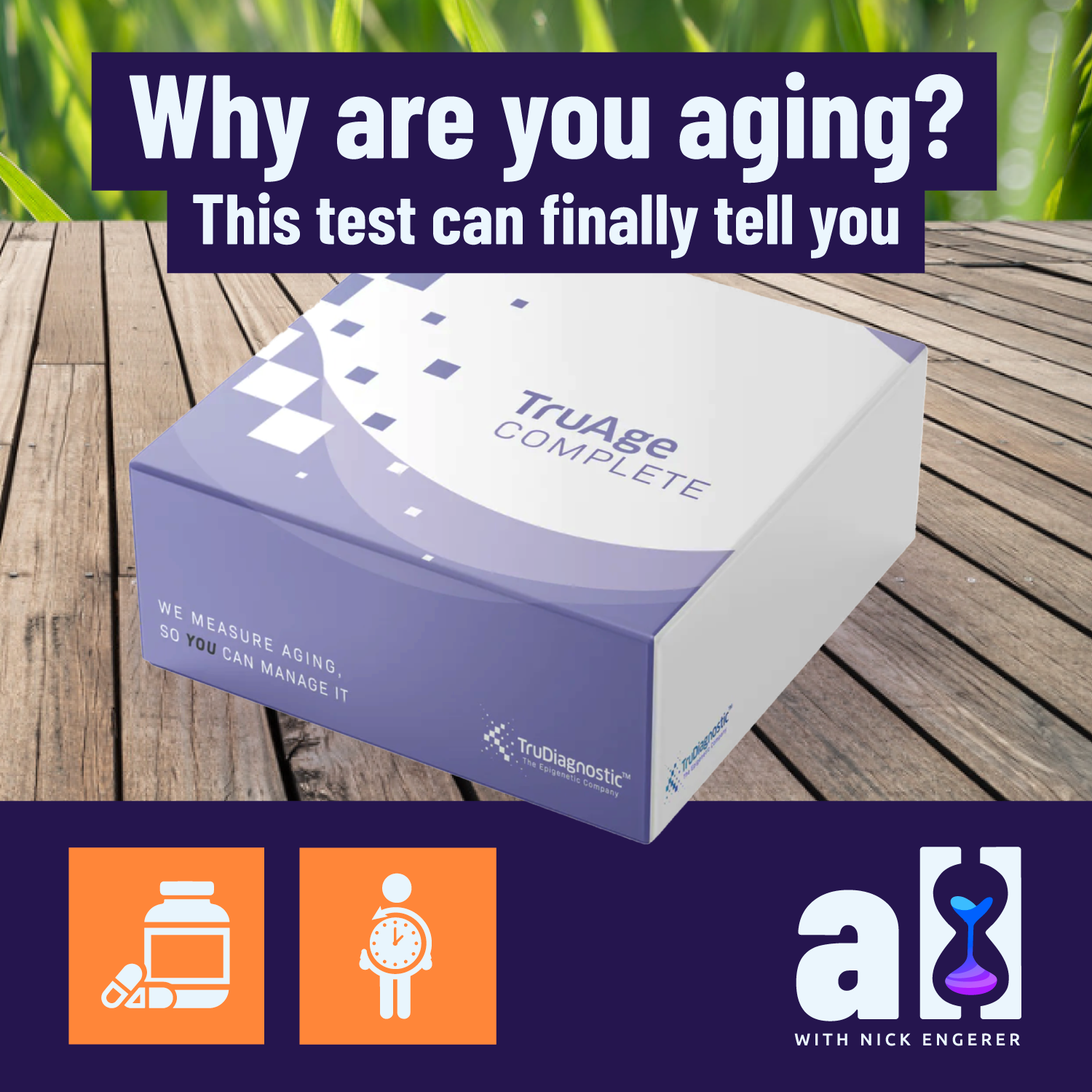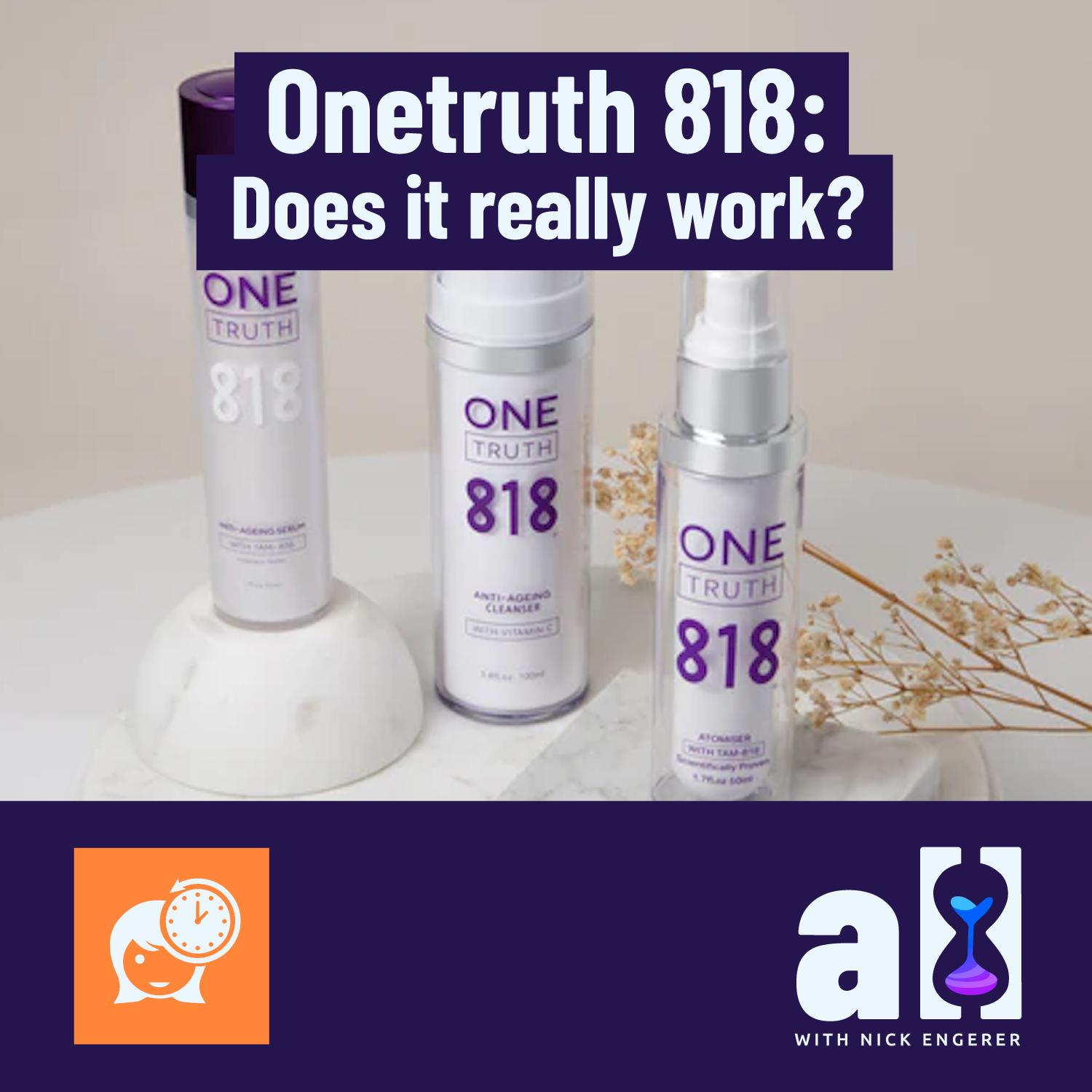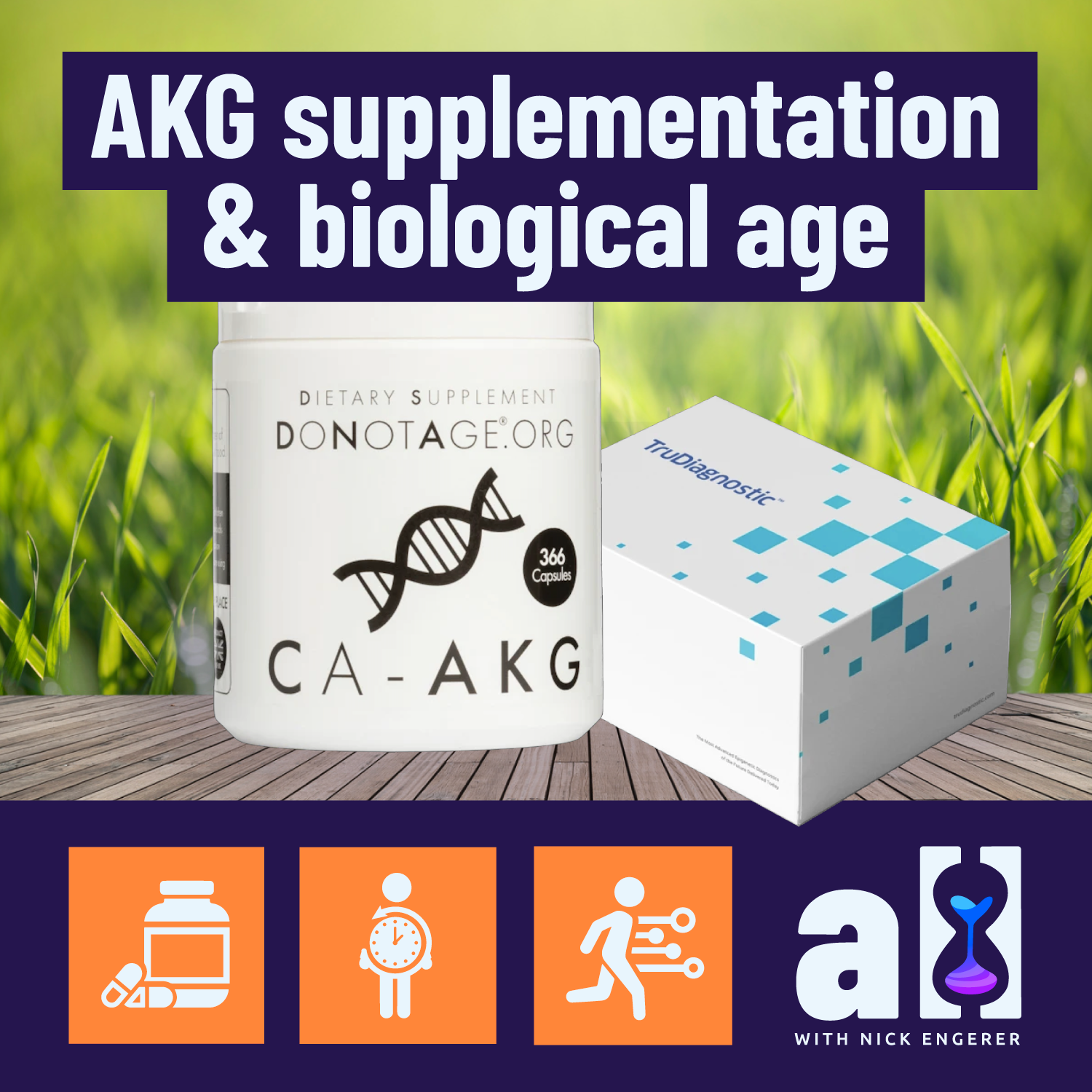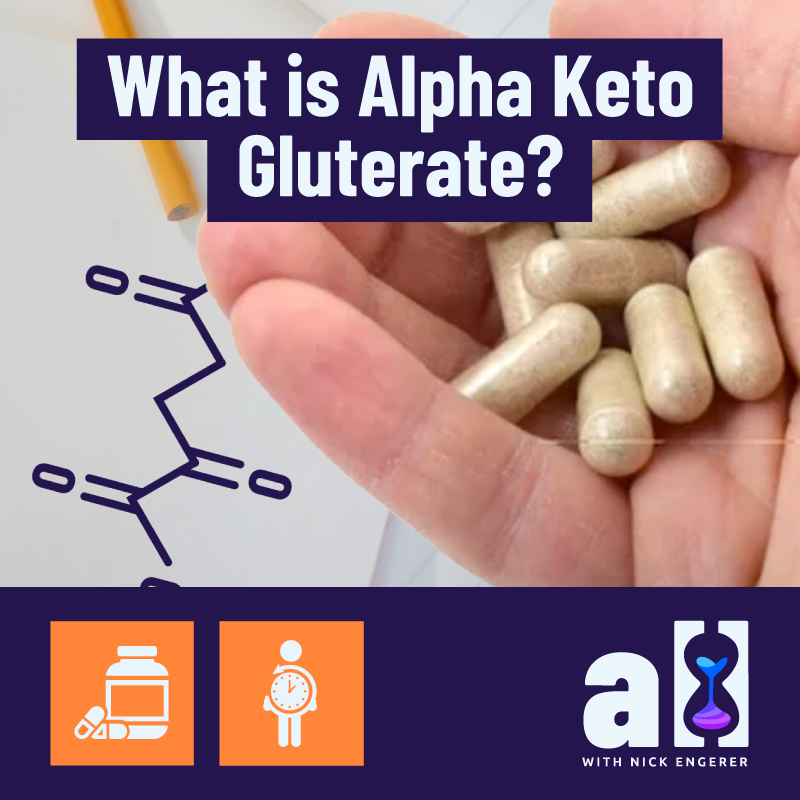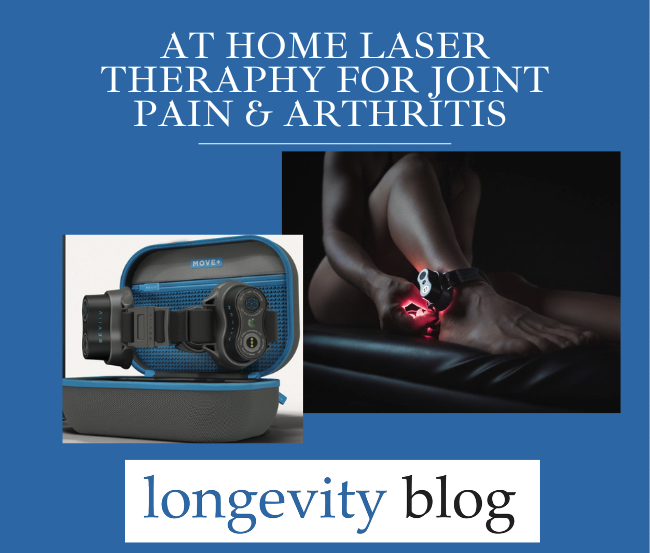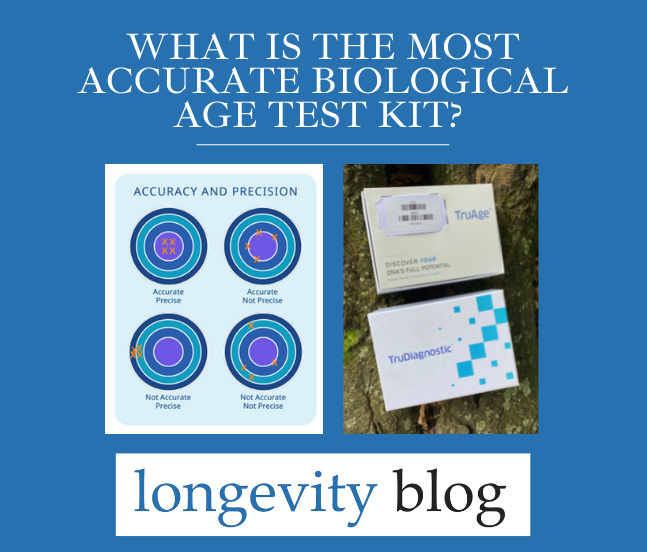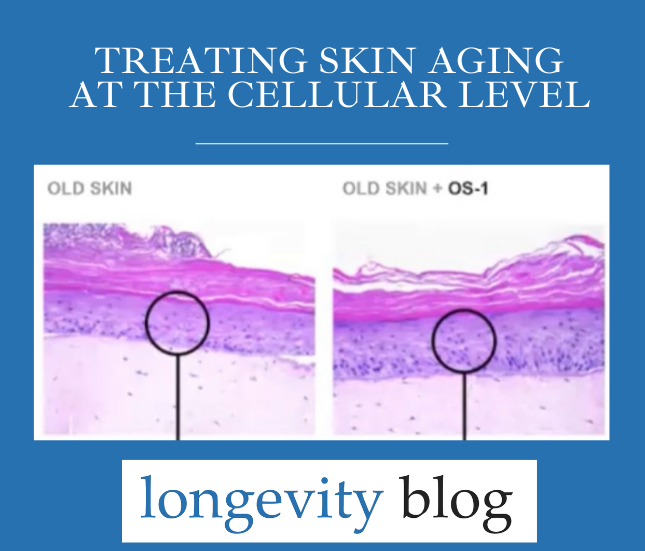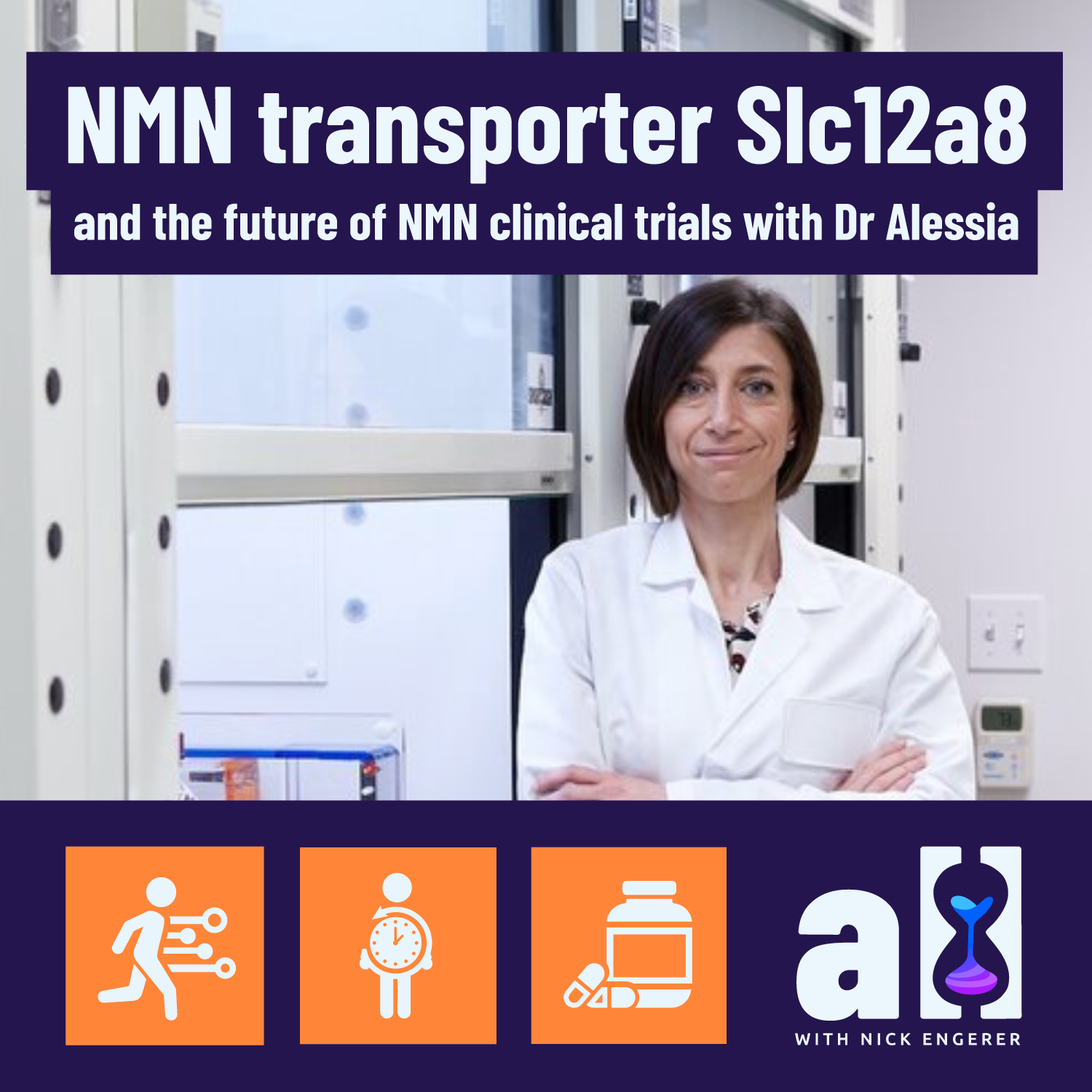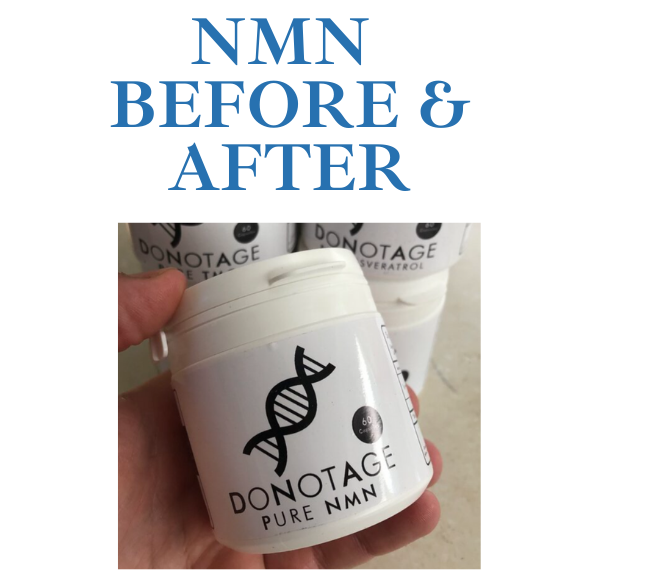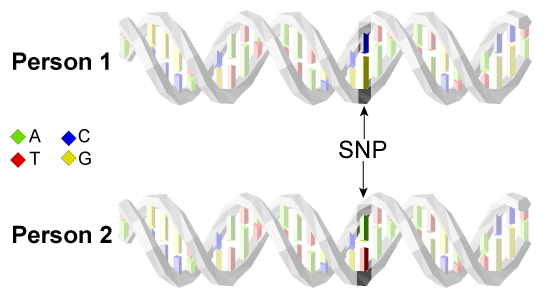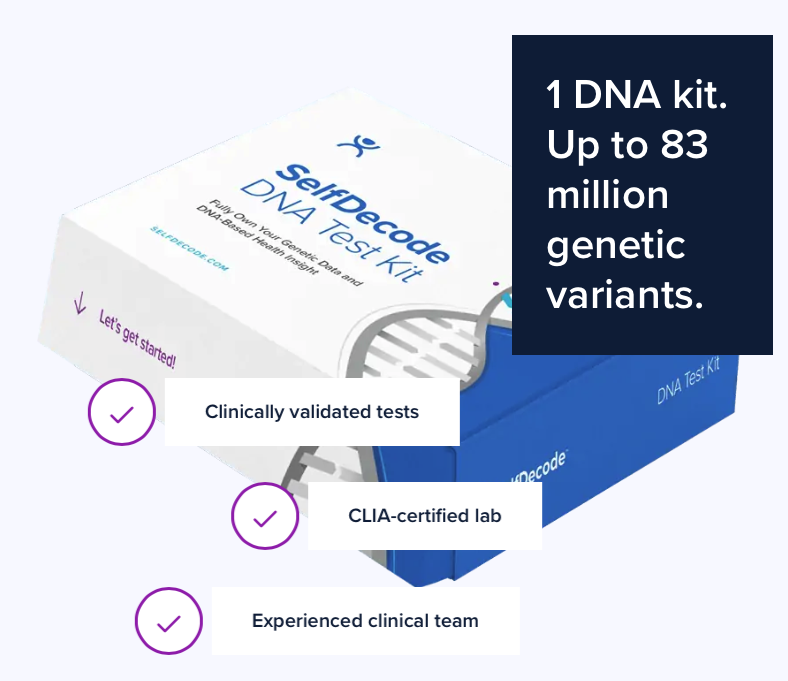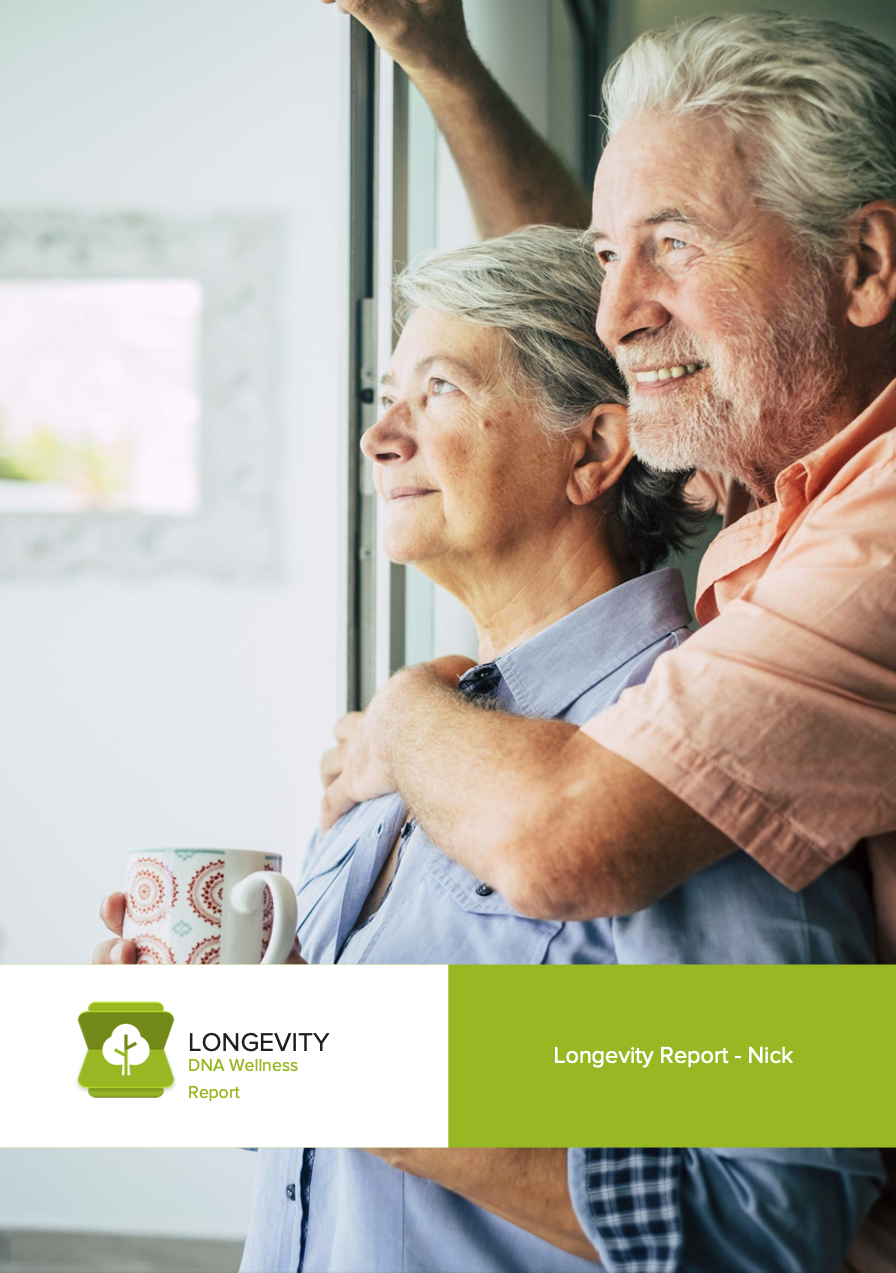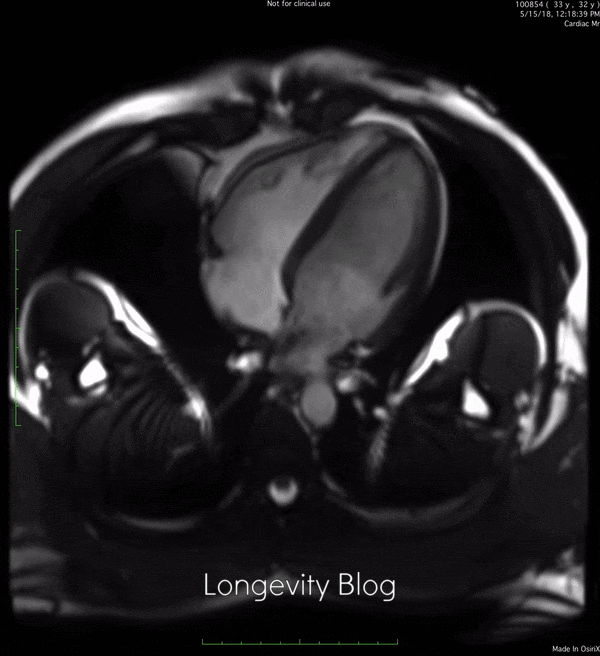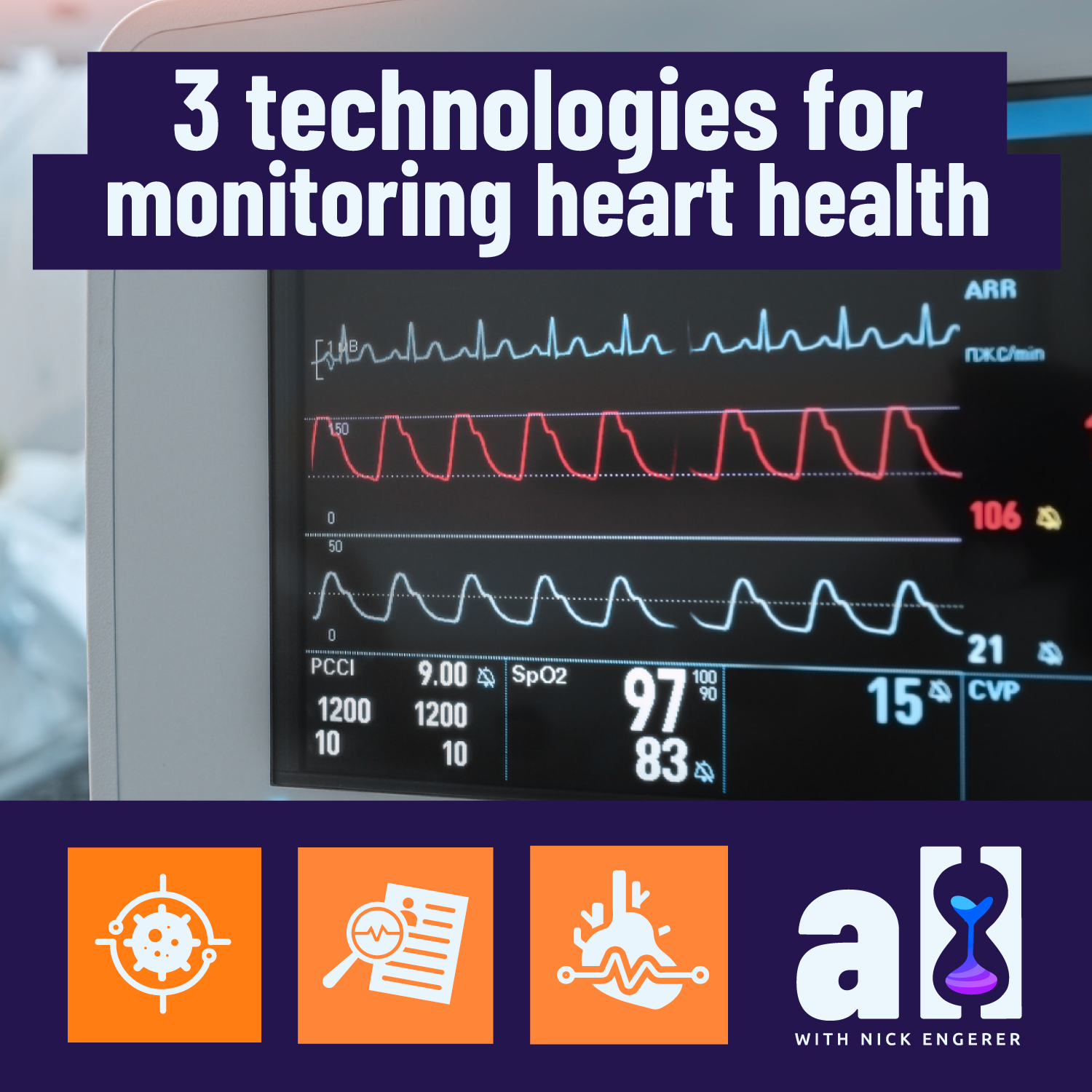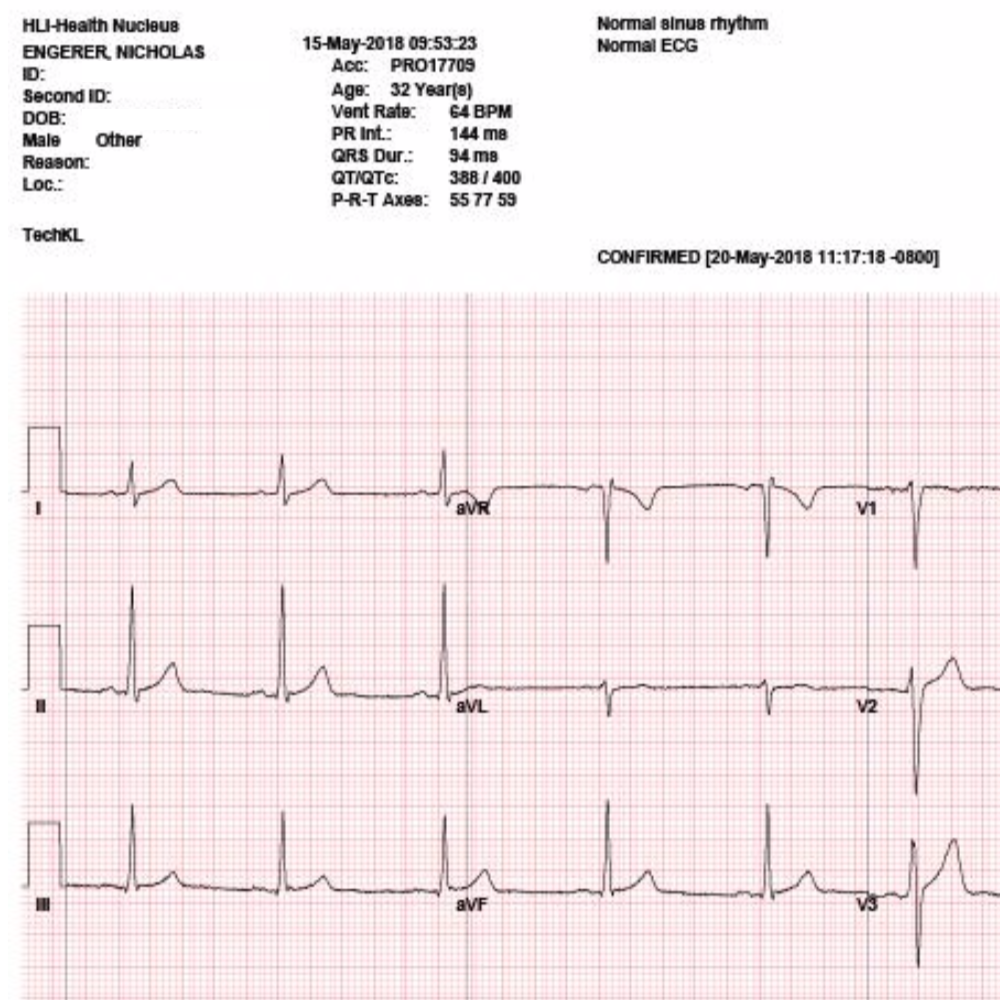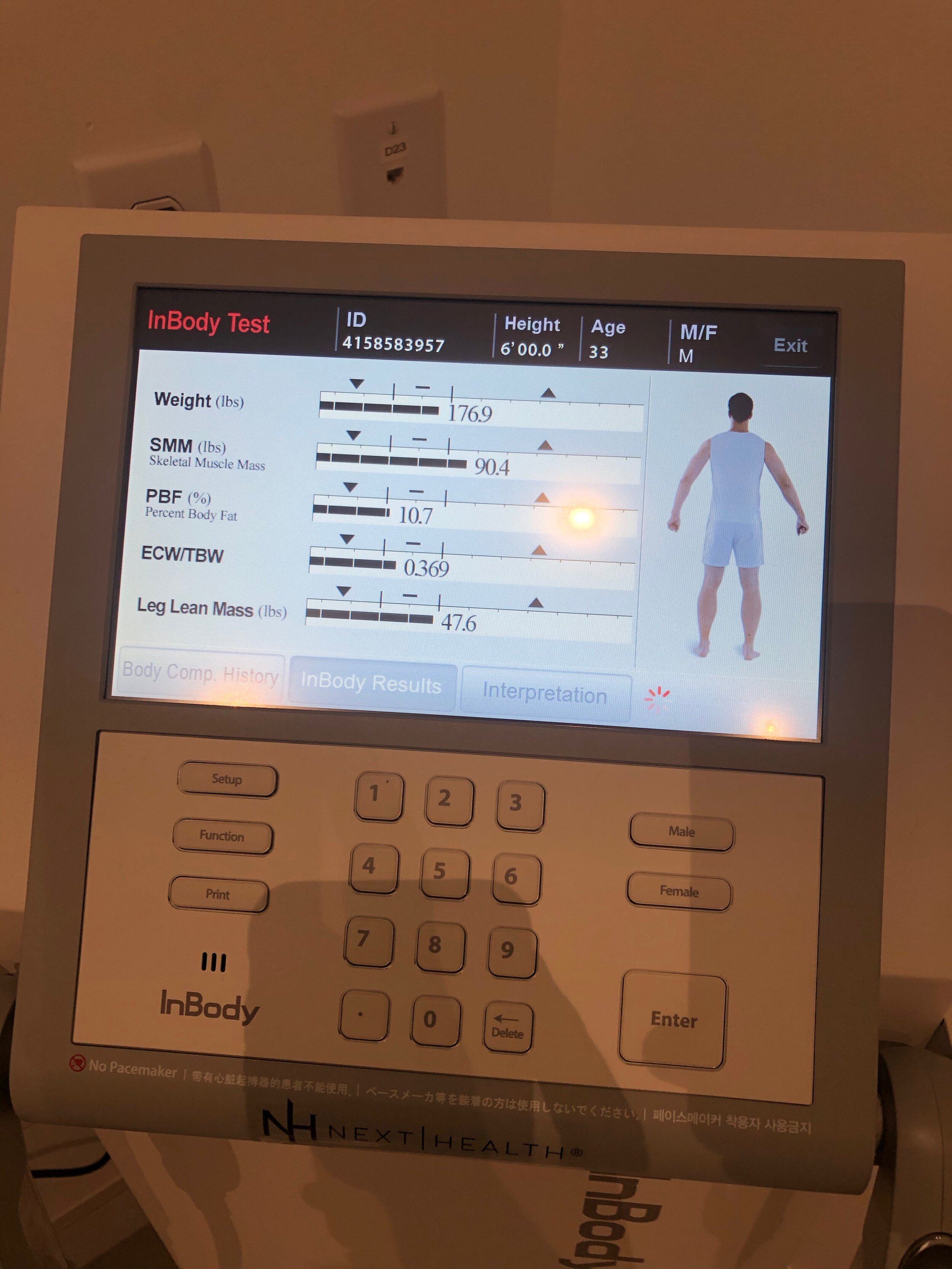Wearable Continuous blood pressure monitor technology is finally here
At last, a continuous blood pressure monitoring wearable arrives
Continuous blood pressure monitoring through a high quality wearable device is now possible. In our post today, we’ll take a detailed look at the latest wearable continuous blood pressure monitor from our collaborators at Aktiia.
Monitoring your blood pressure is an absolutely pivotal part of your longevity strategy. After all, cardiovascular disease, including heart attacks and strokes comprise the most common cause of death for both men and women, globally.
And you guessed it, high blood pressure is one of the top risk factors for cardiovascular disease, as well as for kidney disease.
However, there are several challenges for blood pressure monitoring, which make it difficult to appropriately manage your risk. The most troublesome is the relative lack of blood pressure measurements; you may only get a few such measurements a year at a doctor’s office visit.
Blood pressure constant monitor technologies have not historically been used. For nearly everyone, if you do decide to monitor your blood pressure at home, you will still only manage to get a few measurements per week or per month, if you are diligent. It is also very important to complete these measurements in a controlled and routine fashion.
This data shows the different ranges of blood pressure in adults and how varied it can be.
Healthy blood pressure ranges were set by a foundational research study call the the SPRINT trial, completed in 2015, and are pictured here. Comprised of a systolic (SCP) and diastolic (DBP) blood pressure measurement, respectively representing the pressure of when the heart muscle contracts and in between beats.
Continuous blood pressure monitor wearables are a new technology option, if you’re serious about your longevity. And you’ll want to stay in the ‘normal’ range, to lower your risk of potentially fatal disease. However, a shockingly high number of people have elevated blood pressure. In the United States, for example, nearly 50% of adults have stage 1 or stage 2 hypertension. Even more concerning, as we will learn in our interview today, half of those individuals don’t even know it.
Continious Blood Pressure Monitor Technologies
For these reasons and more, we are very excited to introduce the latest in continuous blood pressure monitoring from our partner’s at Aktiia. Consider the following statistic from their website:
“Hypertension is the epidemic of our time. Hypertension affects 1.3 Billion people and is the leading cause of heart attacks and strokes globally.
Such statistics are again, quite shocking. And the primary barrier to doing something about this epidemic level of high blood pressure around the world, is making it easily accessible for more people to monitor their blood pressure closely and easily.
The state of the art in continuous blood pressure monitoring wearables - the Aktiia 24/7 system. Worn on the wrist, tracked in an app. Monitor your blood pressure all day and all night without any annoying cuff squeezes.
At Aktiia, they have developed a completely wearable solution which can monitor your blood pressure without constantly wearing a blood pressure cuff (as in “continous blood pressure monitoring cuff” but without the “cuff” part, just what we’ve been looking for!)
If you’re new to Longevity Blog, you’ll quickly learn it is our role to introduce you to novel longevity technologies like this one, and guiding you on how to choose the most effective solutions for extending your own healthspan.
We love to get deep into the details with the founders and lead scientists at longevity tech companies to help you cut through the marketing and onto what really works.
Without any further delay, let’s hear from the Chief Medical Officer at Aktiia, Dr Jay Shah, who is a cardiologist with 15+ years of medical expertise and leadership in healthcare and is a wealth of knowledge on the topic of blood pressure monitoring.
PARTNER Discount Code!
A part of our mission is to make your longevity budget stretch further.
Through our collaboration with Aktiia, we have a negotiated an industry leading 10% off coupon code for our readers.
Use the code ‘longevityblog’ at checkout!
This interview was conducted in October 2023 over Zoom and is an audio transcript with minor edits for clarity, brevity and correctness.
Aktiia Enables Continuous Blood Pressure Monitoring with a Wearable
Longevity Blog (LB):
Jay, thank you so much for joining us on Longevity Blog today, we are really interested in your novel piece of technology that allows continuous measurement of blood pressure. You are the Chief Medical Officer at Aktiia and you are here to tell us about that technology. Thanks for joining us.
The status quo in modern medicine is blood pressure measurements taken by a cuff on the arm, sometimes there is still a stethoscope involved, and is only done once or twice a day at most. However, longevity technology has advanced and there is now the ability to measure blood pressure continuously.
We are really curious to know upfront - what is the most interesting thing that measuring blood pressure continuously reveals versus it being measured just once or twice a day?
Dr Jay Shah (JS):
It comes down to the main reason that elevated blood pressure actually causes death and disease to your body - BP does this over long periods of time.
Taking one measurement at one moment, at one point in time, maybe once or twice a year, really does not allow any one physician, person/patient to understand what are their blood pressure trends, fluctuations, consistency, over long periods of time, over weeks, months, and years.
In fact there is no current or traditional technology that allows us to do that until very recently and that is really at the heart of what Aktiia does. Our central perspective about blood pressure is that consistently optimising blood pressure over long periods of time is how a person can mitigate the risk of blood pressure driven diseases.
To do that, you need a tool that allows you to consistently assess, look at, manage and optimise your blood pressure over long periods of time.
Blood Pressure Constant Monitor to Reveal Masked Hypertension
LB: The reason behind this, there is this word called 'hypertension'. Hypertension is referring to systolic and diastolic blood pressure measurements above a certain range that we have established through clinical research, that is the healthy, borderline and unhealthy ranges.
To be above the healthy range, you are creating the risk that you are talking about. For many people, they are unaware they have hypertension. There is this concept called “masked hypertension”. What does that term mean? And what is the approximate percentages of adults who have masked hypertension?
JS: Masked hypertension is a term that refers to situations where people have normal appearing blood pressure in the physician's office when it is checked by a nurse or a physician. But at home, which is where we spend 99.9% of our lives, 'in the at home environment', they have higher than normal blood pressure.
In effect, it is essentially missed. People can go years, decades having higher than normal blood pressure, and that is what is called masked hypertension. That is about 15% of the population who have hypertension.
Another version of that is called “white coat hypertension”, which is sort of the inverse, where someone has high blood pressure in the clinic, so the physician and patient get worried, but actually the blood pressure is normal at home.
High blood pressure often starts fairly early on in life - in our 20's, 30's and 40's. Precisely during the decades where we are the least aware of our own health, the least proactive generally.
“Only after years and decades, for many reasons, and not just masked hypertension, but for many reasons, high blood pressure often goes undiagnosed. Over that period of time is really when blood pressure really starts to do its significant damage.”
How to Sleep with a 24 hour blood pressure monitor?
LB: There are a lot of variables that are involved in an individual’s blood pressure. This is known, this is not a surprise. For quite some time now, there have been options for using an 'ambulatory' or '24 hour' blood pressure monitoring device to get a full day or maybe a few days of blood pressure data. Even Though that has been available for quite some time, there is not very much uptake.
Why don't we see more people using continuous blood pressure monitoring data?
This data shows the difference between using a 24/7 monitor compared to the normal ambulatory device. You can read the study for yourself here.
JS: There are several reasons.
First of all, it's dramatically cumbersome, it's a real pain to use it. There are reimbursement issues in many countries where it is often not paid for or not paid very well, for a physician or health care system to actually do it. Which of course limits the motivation in some ways.
Even if they did, or even if someone did use a 24 hour ambulatory blood pressure monitor, it's still a regular cuff that stays attached to your upper arm for the entire 24 hours and you cannot remove it, and you have to carry a fairly large box with you for the 24 hour period.
About every 15 to 30 minutes, it will go off. It will inflate, squeeze your arm and take a blood pressure measurement, even when you are sleeping.
For all those issues and reasons it is not reused very commonly outside of usually highly specialised hypertension centres or academic institutions, or some other select sort of health care centres.
Continuous Blood Pressure Monitor Wearable Data
LB: It certainly sounds quite uncomfortable, but the data it yields certainly would be much more insightful than a single point measurement?
JS: Remember, it's 24 hours and generally it's not repeated on a yearly basis, or every six months or every three months, it's generally done once and usually to answer a specific question.
The benefits of being able to share the data with your health practitioners will help with the longevity of your health journey
For example, if a physician is confused about what is this person's true blood pressure they suspect white coat hypertension, masked hypertension or some other confusion about what this person's blood pressure is, then that is the scenario where we where we might order a 24 hour ambulatory blood pressure monitor and it is done almost exclusively through physicians, as you need a prescription for it.
Even if you did it, it is still only for a single 24 hour period. And as you just said, blood pressure fluctuates continuously, day by day, even changes week by week, it might change month by month.
If diet changes, if your weight changes, if your alcohol intake changes, if you change medicines, if you change all the other factors that affect your blood pressure, that pattern changes.
There have even been studies where the same person repeats the 24 hour test three months apart where there can be up to a 40% variability in the readings. So it is still a snapshot, usually one day's worth of data.
What is the best continuous blood pressure monitor
LB: To summarise, we hear there are three real barriers to greater uptake of 24 hour ambulatory blood pressure measurement. One is, you have to go to your doctor to get it. Second, there is the cost barrier and whether or not that device costs you out of pocket. Third, it is particularly cumbersome and not very comfortable.
Elegant Swiss Design which you charge and wear it all day long. The Aktiia 24/7 system sits on your wrist comfortably, watching the blood surge through your capillaries to create highly accurate estimates of blood pressure.
This brings us nicely to discussing the solution that Aktiia have developed in their very unique combination of a cuff, a bracelet and an app that allows us to monitor blood pressure continuously.
And when we say ‘continuously’, that’s important because we are going into a completely new space, where we have genuine continuous measurement. What does that enable for everyday at home use? What might we learn from this data?
JS: It is easy to use, it's simple, it's an easy to use wearable, you just put it on your wrist and you set it and forget it. Once every month you have to do a calibration step that takes about 10 minutes driven through the app and using the cuff and that is about it.
You just have to keep it charged, wear it - and it has the form factor of elegant Swiss design. It enables you to just not have to think about the act of taking blood pressures. Typically, with any device, traditional cuff you have to think about it, it is an active process, you have to sit down, you have to create a space for yourself, you have to sit in the right position, have the right environment, do all the things that you are supposed to do to take an accurate cuff measurement.
With our device, it is all built into the programming that it takes accurate measurements at the right time, and it is done for the user.
24 hour blood pressure monitoring versus continuous blood pressure monitoring
LB: How many readings does it take per day?
JS: On average, you get about 27 readings per day. It's not taking every minute, because there is too much motion of the wrist to take accurate readings and other other limitations. On average it takes readings slightly more than once an hour.
Remember going back to our primary perspective is that consistency of blood pressure over long periods of time is really what we are trying to solve for. What is more important than one reading, is to compile hundreds and thousands of readings over long periods of time, and to really allow you to understand your long-term blood pressure trends.
There are so many things that this type of data unlocks, and the closest analogy that we have seen, and as most most people are now aware of, are continuous glucose monitors
LB: And what is this continuous blood pressure monitoring data revealing?
JS: For the first time with this dataset, approximately 800 data points in a month of blood pressure, you can start to see trends and patterns clearly.
One thing this enables is a personal trial where you do an intervention targeted at your blood pressure and see its effect. You can see that cause and effect much more clearly with the broader, bigger dataset that this technology enables.
Again, one of the cardinal issues with blood pressure management is trying to effect behavior change. There are often seven recommended lifestyle changes for BP, all of which are extremely difficult to do and some medications they can try.
As a physician, I really don't know and neither does that person, which one of those seven changes and which one of the medications is actually going to work best for them. We have no idea. We recommend the same thing to pretty much everybody.
How is continuous blood pressure measured?
Data is the key to being able to monitor your blood pressure which allows you to manage your own health. Extensive validation has been undertaken by Aktiia across 5 separate research papers to assure its accuracy and precision.
LB: We really like this point because it is really valuable to understand what is working for you and there is this opportunity here with this rich data set to do some self experimenting.
Jay before you go on and into that, we want to just ask one or two questions about this technology. You mentioned it is elegant, it is Swiss design, there is a really impressive story here and how this piece of technology was developed.
We are going to talk about how to use it, before we do that, let's talk about where it came from. We are immensely curious.
Your website states there is 18 years of research and development behind the Aktiia technology and that some of that core work came out of novel research done by your CTO, and in his PhD research.
Can you tell us just briefly some of the key milestones that have allowed this technology to come to exist?
JS: It all stems from our two Co-founders, Drs. Joseph Sola and Mattia Bertschi. They met in Neuchatel, Switzerland at an engineering innovation lab called CSEM - the Centre for Semiconductors, Electronics and Microtechnology.
It started in 2003 -2004, before the iPhone was even developed. There was no such thing as a smartwatch. They were starting to use optical sensors to try to derive physiologic parameters. The first thing they did was to go and study and they could measure heart rate. Again, before the smartwatches, and wearable devices.
They developed a way to look at optical signals and derive heart rate from it. Now many, if not most of these technologies around the world eventually licensed some of their scientific work and discoveries.
Continuous Blood Pressure Data: All About the Algorithm
LB: And then they made the leap to blood pressure?
JS: Heart rate was dramatically easier than blood pressure, so they tell me. At that time, they said, wow we have learned a lot about how to look at these sensors and look at these optical signals, what else can we start to learn about? What else can we start to derive? Can we try to derive blood pressure from these data?
That started an 18 year journey. They started with an animal wet-lab, with pigs, studying their arterial physiology, and how the sensors and the optical signals reacted to them. They did it in animal models first and then they did in human models and then they eventually got a working prototype together in about 2017.
This brought them to the point where they thought they could spin it out and commercialise the technology. Five years ago, 2018, they spun out from CSEM, created the company called Aktiia.
Continuous Blood Pressure Data without a Cuff
LB: The core technology behind this measurement - it is not a compression cuff at all. It is not making any noise - this is an optical sensor.
Tell us, how does that technology work? You mentioned understanding arterial physiology, we imagine there is some fluid dynamics in there. Trying to guess pressure changes based on estimated dilation and contraction, the diameter of blood vessels or arteries, veins, etc. Can you give us a bit of insight into that?
JS: The way it works is it takes these lights that are the two green LED lights on the back of all of what you see most smartwatches. There is nothing actually proprietary about the Aktiia hardware. It has two LED lights and an optical sensor and a three way accelerometer.
What it does is it shines those lights into your skin into the capillary bed, the tiny vessels of that are just underneath your skin and it gets a reflection back. That reflection back into the optical sensor creates a a waveform similar to an arterial waveform - not quite the same but similar.
The devices takes about 30 to 50 waveforms, compiles them together, and then they are sent from your device to your phone via Bluetooth, and from your phone to the cloud via the Wifi connection or cellular connection.
In the cloud that is where the algorithm that they have developed and continue to refine over almost 20 years now, goes to work on that optical sensor data. They were able, after all this time in discovery, to build an algorithm that picks out the salient features of those waveforms for them to be able to derive accurate blood pressure and heart rate, and then delivers that data back to your app as blood pressure heart rate data.
You can't feel it, as you said correctly, you can't feel when it's taking a measurement, there's no cuff and there is no squeezing.
“There’s no cuff and there is no squeezing. ”
LB: There is an important step in this where there is a cuff, and I wanted to just make sure that it was clear what that cuff element on your website product page represents.
You might think I have to wear that, but no, you are doing a once a month calibration. Where does that fit into enabling the algorithm that you just described?
JS: The simplest way to describe it is it puts the numbers in terms of millimetres of mercury. That is the only thing that is missing from the algorithm is that it derives a number and it can use these waveforms to track changes, but it needs something to provide results in units of millimetres of mercury. It's just for that once a month calibration step.
Aktiia is the Best Continuous Blood Pressure Wearable with the Science to Prove It
LB: This device has actually gone through all of the required steps for regulatory approval in several regions. There are five clinical trials now completed with the technology, some of which you are the co-author on, which are dedicated to the validation of this device.
Can you give us a few bullet points around how we know this device is both accurate and precise with these continuous measurements?
JS: All blood pressure devices in countries are regulated medical devices. In all the markets that we are in, we have to have regulatory approval. And regulatory approval generally means that you have to prove that your device, whatever it is, is accurate as compared to a reference device, some standard other device that is well accepted and has proof for.
We have regulatory approval across the EU, UK, Canada and Australia and New Zealand. When we do our validation studies, we don't compare ourselves to a standard automatic upper arm cuff, because the range of error of standard upper arm cuffs is actually fairly wide.
We run our own, highly rigorous validation protocol in Lausanne, Switzerland at the University Hospital, in their hypertension specialty lab.
Our standard reference is called 'double auscultation'. What the traditional “auscultation method” means is that the observer is using a stethoscope to listen to the arterial sounds to measure the blood pressure using a cuff.
We do that, but with two observers at the exact same time with a bifurcated stethoscope. Two observers are listening at the exact same time to a patient using an electronic mercury column to determine the blood pressure value. They have to agree within five millimetres of mercury or less on every reference value.
That is determined as the gold standard reference value and that is what we are comparing to. So that is how we have done all our validation studies across all the body positions where we have validation data and that is how we have gotten the CE mark across EU in the UK, Health Canada and TGA in Australia.
When will Aktiia become Available in the United States?
LB: People are going to want to know about the United States and this really exciting piece of technology. There is probably only so much you can tell us and it might be speculative, but talk to us about entry to that market. What does that look like for you in terms of a time?
JS: It is probably the most conservative and challenging regulatory body probably in the world, and it is a matter of going through their process and meeting their milestones and the desires that they want to see before they will think about regulatory approval.
There is clearly a pathway forward with them and all I can say is that there are several other parts of the puzzle that have to fall into place for us to have a good chance of approval there. I think that will happen within the next 12 to 16 months.
Can Aktiia Take Blood Pressure Measurements During Exercise?
LB: Thank you for putting it down to a range for us.
You have talked about the technology and how it works and getting these measurements across the day - readers will naturally have questions around what types of measurements they are going to get.
We have two questions for you about certain times a day. The first one is exercise, you mentioned accelerometer in the device and I am assuming that you are not going to get measurements during exercise?
Learn more about cardiovascular disease prevention with this post about four blood tests that can help you manage your risk.
JS: The first thing to understand is just what happens to your blood pressure when you are exercising. Physiologically, when someone exercises your blood pressure generally goes up, normally. It goes up above the standard reference ranges of a resting blood pressure, and that is normal, in most cases. Sometimes it goes up excessively, but most of the time it goes up normally.
Then immediately after exercise, generally, it actually dips below your normal resting blood pressure, and then comes back to your normal. These are the sudden, what we call acute changes of physiologic exercise. During exercise of most types, if not all, not maybe not all, but most types, the Aktiia system will not take a measurement.
The reason for that is, one is that the accelerometer when it detects significant motion of the wrist is the first and primary filter of quality for motion, and it just tells the device, no, you are not going to take a measurement.
The rationale behind that, is that the optical signals in the capillary bed at your wrist, are highly sensitive to and degraded with significant motion. We do not want to analyse bad data.
If someone is exercising, you are not going to get measurements during that time, but you will get measurements before and after, and all it requires is about 30 seconds of stillness of the wrist.
Aktiia and Continuous Nighttime Blood Pressure Measurements
LB: Thank you Jay, our second question is about nighttime blood pressure measurements. There is actually a significant amount of science dedicated to nighttime blood pressure measurements, in particularit being more correlated to cardiovascular disease risk than daytime measurements.
Very few people will have ever received a nighttime blood pressure measurement, your device clearly is going to enable that. What do these measurements most often reveal?
Some light-hearted blood pressure monitoring fun…
JS: There are many signals in nighttime blood pressure data that you just don't get during daytime. There are clearly certain signals that are more associated with cardiovascular risk. But even with the ambulatory blood pressure monitoring data, which all drives the evidence around this nighttime data, there is not clear knowledge about what to do with all those markers or data points, other than just to know about it.
There are a few things to think about, maybe you can alter medication regimens, sometimes it involves sleep disorders, like sleep apnea, but oftentimes, there is not that much that you can do about it.
One of the things about Aktiia and continuous blood pressure monitoring will enable, is that the data set is so dramatically different. We are working with many universities and research centres around the world to try to understand all possible novel markers that we can get out of this dataset.
Historically we have never really been able to look at blood pressure data in this way, and now all of a sudden, we have this dataset where we can. I think there is a lot more discovery to be done and there are probably many more unknowns than there are knowns at this point.
Data from Continuous Blood Pressure Wearables Enables Personalised Healthcare?
LB: That makes a lot of sense because whenever we start to get continuous data or higher frequency measurements, in many fields of science, we start to see some of those second and third order effects that jump off the page that we didn't see before.
In your answer there, you started to touch back on one of your points earlier that I promised we would come back to, and this was your reference that when somebody comes and visits you in the clinic, and they have high blood pressure, you give them seven things to go try.
Can you tell us what those seven things are?
Eating a healthy balanced diet is one of the best ways to keep your blood pressure under control
JS: Almost all your listeners could too, because they are so well known. They will say you need to exercise more, you need to lose weight, you will need to decrease alcohol, you need to stop smoking, you need to decrease your sodium in your diet, you need to have better sleep habits, and decrease stress.
But here is the catch - every one of those seven things to a patient to a person is fairly life-changing; these are not easy things to do.
Even increasing exercise to over three hours a week takes an inordinate amount of effort for most people to really adjust their lifestyle. Or if you actually want to reduce your sodium in your diet to the recommended value of 1800 to 2300 milligrammes of sodium a day, it is incredibly difficult, because sodium is in almost all foods.
And these blanket recommendations are completely generic. As an example - only about 50% of people are are salt sensitive. Meaning for fully half of the people that we tell to lower their sodium, it will not make a difference in their BP. There is currently no way to know who is salt sensitive and who isn't. We do not know, physicians do not know, the patient does not know either. And there is no way currently to figure it out.
Using Continuous Blood Pressure Monitoring to Select the Right Blood Pressure Medication?
LB: The same thing could be said about testing blood pressure medications, correct? There is usually trial and error involved in finding the right medication to control a person’s blood pressure and balance that with any side effects.
JS: All expert hypertension bodies recommend two pathways of medications. Either you are 55, or above, or 55 or below, or you are black or non black. Based on those two things, you get a regimen of blood pressure medications, and it is the same standard medication for everyone.
We don't really know who is going to respond more significantly to one medicine or another. All the evidence that has ever been done on blood pressure medications has been done on a large scale, population based way. So we do not know how individual people respond to them.
This is another example of how people can start to use individual data from clinically validated wearables to say, okay, that medicine really did not work, but this second one really did work. Maybe I can just get away with one instead of two, and really start to dial in on their medication regimen in a more precise way and a more individualised way.
Dr Shah’s Personal Approach to Longevity
LB: We love this because you've just gone through and describe self experimentation, you have done that from a doctor's perspective, from a technology entrepreneurs perspective, that's really refreshing and fun.
Clearly, the Aktiia system is going to support our audience with healthfully monitoring and improving their blood pressure with lifestyle changes and medications in collaboration with their personal doctor.
In building a longevity strategy, each of us has to pay attention to what works for us and what our risks are. In closing, we would like to hear from you personally, one or two things that you do to look after your own longevity, if you don't mind sharing?
Dr Jay Sharing lives a balance lifestyle including regular exercise and social interaction. This is one of his walks in Switzerland along Lake Geneva.
JS: The two things that I try to focus on as much as I can - exercise is the primary one. I always try to get as much exercise as possible throughout the week. I try to get at least three, four hours of exercise in.
Second, and I don't know the science behind it, but I think one of the most important things to living a long and fulfilling life is social interaction, laughter, community, and I think that over the last few years, I have really tried to be proactive and purposeful about finding a place in a community, neighbourhood, people and family around me. This really gives me a sense of contentment and fulfilment.
I think those are the two things that I really tried to focus on more than anything else.
LB: We really appreciate you joining us on the Longevity Blog here for the interview today. We hope to hear more about when this device will be available in the US. Thank you.
JS: Thanks very much for having me! It's been a pleasure to be here.
FDA & TGA DISCLAIMER
This information is intended for educational purposes only and is not meant to substitute for medical care or to prescribe treatment for any specific health condition. These blog posts are not intended to diagnose, treat, cure or prevent any disease, and only may become actionable through consultation with a medical professional.
Genetic Risk Analysis for Longevity: An Interview with Self-Decode Founder Joe Cohen
Do Genetics Determine Longevity?
The simple answer is ‘No’. Genetics do not determine longevity.
Longevity is a determined by a multitude of factors, including your environment, socio-economic status, risk appetite and of course diet, sleep & exercise.
However, they do very much influence longevity.
And when it comes to your personal longevity strategy - the simple answer of ‘No it’s not genetics that will determine your lifespan’ misses this key point.
Perhaps most importantly, noting that genetics do not determine longevity ignores a very important point. Namely that in planning ahead for a long and healthy future - you as an individual are not a statistic.
So, How Much Do Genetics Affect Longevity?
Genetics could have a lot to say about your longevity as an individual in many cases.
We can point to several illustrations.
Do you carry the APOE4 gene that significantly increases risk for Alzheimers? What about the BRCA genetic variants that influence breast cancer (as well prostate cancer)?
What about Lp(a)? Do you carry the genes which lead to elevated levels of this nasty little lipoprotein? If so, your risk of heart attack at a young age is significantly elevated.
To answer the question, ‘do genetics affect (influence) longevity?’ - you need to look past the mainstream articles written to appeal to a wide audience.
They are borne from high level statistical analysis.
Does it it really matter to you what the genetics of countless others determine on average?
Of course not. As an individual it matters what YOUR genes say. And if you carry any of the genes we just mentioned, you’re at elevated risk of early onset age-related diseases.
That means genes could very much influence your longevity in a significant way.
What to do about it? Read on.
What Genetic Factors Determine Longevity?
Once again, searching the internet for this answer will bring you to a bulleted list of ‘major’ genetic factors that may influence healthspan and lifespan.
Big deal! Eye roll.
Why? Because these articles once again miss the point - you need to zoom in on your individual genetic risk profile to know what risk factors you carry.
Thankfully, on this personalised assessment front, there is welcome news.
Progress in genetic testing and genetic analytics has moved incredibly quickly over the past decade.
Perhaps most importantly these advancements have been in both cost (genetic sequencing is getting cheaper) and importantly the algorithms that can connect scientific studies about specific genetic variants to disease risk.
And not just any old risk - your risk.
These technological advancements are now able to get quite specific about that.
Let’s talk about ‘the how’.
How reliable is genetic testing in predicting disease risk?
If you haven’t been paying close attention to this space, your knowledge on the topic is likely quite dated.
The answer this this question, just a few years ago was bleak - simply put, genetic testing was not very good predicting disease risk.
However, the rate of innovation with genetic analysis has been particularly quick over the past few years, and through technologies like artificial intelligence, it’s picking up the pace.
Self-Decode’s DNA test kit is mind-bogglingly cheap, at only $90. We’ll learn how they use an advanced machine learning process call ‘imputation’ to analyse your genome in a very targeted way, to keep costs down, while delivering a very deep analysis.
If we want to understand how reliable genetic testing can be for assessing disease risk (and thereby your longevity) we need to get past the dated & mainstream and up to the front of the pack.
Onward, to the forefront of genetic analytics!
This takes us to the exceptionally impressive data science, genetics and science team at Self-Decode.
They have recently developed some remarkable capabilities for genetic testing (low cost & accurate) and analytics (years ahead of the competition).
Most importantly, they’ve also built a successful platform for delivering personalised insights about your longevity risks AND what you can do about your risks.
How have they done it? We’re glad you asked…
Next Generation Genetic Analytics: An Interview with Self-Decode Founder Joe Cohen
In order to better understand Self-Decode’s mission and the capabilities of their team, we interviewed their Founder and CEO Joe Cohen.
Joe Cohen is the Founder and CEO at Self-Decode. He is an avid biohacker and self-experimenter, as well as a respected entrepreneur.
You may be aware of Joe’s earlier work on the website ‘Self-Hacked’, which is one of the most widely used and thoroughly cited biohacking websites on the internet.
When we interviewed Joe, asking specifically questions about longevity and genetics, we were very impressed with the capabilities they’d developed.
Perhaps most interesting was Joe’s announcement of the arrival of a ‘2nd generation’ of genetic analytics.
This 2nd generation is powered by artificial intelligence and advanced data science, which has recently become capable of providing a level of insight health enthusiasts, biohackers and longevity junkies (like you) have been left wanting to date.
Namely - what should I be doing to manage my personalised risk?
Personalised Genetics Insights with Actionable Information? Finally!
As we said at the opening - simply put, early stage genetic analytics have been fairly disappointing.
Direct to consumer genetic analytics really hasn’t really proven all that useful for the everyday wellness warrior and longevity enthusiast.
However, at Longevity Blog, we believe we are entering a new era of test at home genetic kits.
We’ll help highlight why this is the case through our discussion with Joe and in upcoming posts which dive into Self-Decode’s online genetics reporting and analysis platform.
When we’re through, we expect you’ll feel confident that Self-Decode genetic reports can become part of your personalised longevity strategy.
We’ll also take a look at their LabTestAnalyzer platform, including insights from a self-experiment run by our Founder Nick to radically reduce his LDL-C cholesterol levels.
Let’s get onto that interview!
This interview was conducted over Zoom during August 2021. It has been edited for brevity, conciseness and correctness.
Longevity Blog (LB): Joe, to kick things off, tell us about SelfDecode, its mission and purpose as a company, and what is your team's united behind? What's your mission?
Joe Cohen (JC): Our mission is to improve people's health. That's really what it comes down to in a very small nutshell. The real question is: what is the best way to do that? We think it is through personalized health strategies, looking at DNA and lab tests, and giving more precise recommendations.
One defining aspect of Self-Decode is the incredible scientific & data engineering team they’ve built. With 85 people in the company nearly 70 are dedicated to making their genetic testing & analytics better every day! Meet the team here.
LB: A core part of the offering from SelfDecode is genetic testing. In several recent interviews, you've been discussing the arrival of ‘a second generation of genetic analytics’.
In these interviews you specifically discussed the involvement of artificial intelligence. Introduce us this ‘second generation’ concept - in particular, how SelfDecode’s offering differs from other apparently similar services.
JC: Most companies that are doing genomics are not actually doing personalised health. Actually, none of them are, really. In order to do the analysis right, it takes a lot of very specialized skills that are hard to come by.
Very few companies are actually doing this and no B2C (direct to consumer) companies are doing genetic analysis correctly. 23andMe may be one company that's doing the analysis correctly, but they're not giving precision health recommendations.
In order to do genetic analysis correctly, you need to look at millions of variants. Whereas most companies are only looking at a handful of variants, and then making conclusions based on that.
Number one is they're not doing the analysis correctly. Number two is not giving precision health recommendations.
In order to do these both well, you do need to use AI and deal with large amounts of data. That's a big computational challenge and a major reason why companies are not doing this.
Single Nucleotide Polymorphisms
“In order to do genetic analysis correctly, you need to look at millions of variants.”
LB: One of these challenges and points of contrast is the analysis of single nucleotide polymorphisms, or SNPs, and the limitations of looking at individual SNPs.
Second generation analytics is looking at much more than a single SNP - it is instead looking at many, many points in the genome. Can you explain how that's important for creating that personalised guidance you're describing?
JC: First, looking at many points is more important for genetic risk for a disease. If you're only looking at one SNP - it's like looking at one letter in a book, right? Not even one word, just one letter.
Single Nucleotide Polymorphisms refer to a single location in the genome which may vary from individual to individual. Most genetics analysis test kits look at single SNPs to provide limited insight.
Self-Decode is different. They look at many thousands to millions of SNPs to provide you with personalised guidance.
Sometimes if you look at a few key variants, you might be able to spell a whole word, and that may give you some insights. But more or less, looking at a few letters and coming up with broad conclusions means you’re missing tons of information.
The future of genetics is with AI. But using AI means you need to build an entire data analysis pipeline to look at the holistic picture for risk.
Then after that, if you want to provide personalized information, you can use labs and environmental risks to get a more of a whole picture. That's what Self-Decode does.
Combining Genetic Analytics with Blood Tests
LB: In terms of that actionable, personalised guidance, you have just mentioned analyzing labs in conjunction with genetic risk factors. Your platform then goes on to recommend supplements and lifestyle changes based on those results. Could you provide an overview on how that works?
JC: Users can upload lab results that they get from a doctor using our LabTestAnalyzer and then receive information about the optimal ranges for each blood marker. We then provide recommendations on how to get these markers into the normal or the optimal ranges.
We're working on combining the labs, the environment and genetics in order to create a more holistic picture about what is going on in the individual. And then provide them with the best recommendations to get them into being optimally healthy.
Self-Decode’s Deep Scientific Expertise
“We have a team of 85 people with about 65 to 70 in the science, engineering and development space”
LB: One of the things that SelfDecode has accomplished which is quite unique in this space is assembling a very capable and diverse team of scientists, engineers and software developers to do this type of work. Can you tell us a little bit about your team? What does this team look like? What are they doing?
JC: We have a team of 85 people with about 65 to 70 in the science, engineering and development space. We need a large data engineering team, because we are dealing with lots of data. We also have bioinformatics scientists and genomic scientists, as well as software developers who have to become familiar with these topics.
Our team of software developers, over a couple years, have become more like ‘genomics developers’ really. Many of the data scientists are experts in machine learning and AI.
LB: That team sounds quite diverse and capable. This depth and diversity is one of the reasons Self-Decode has come out with such a high quality product.
Innovating on Genetic Testing Kit Price
Self-Decodes’s genetic test kit is far and way the best value for this market category.
Through the process of ‘imputation’ to scale up your genetic sample, they can offer a low price kit ($100USD) with the equivalent deep dive genetic analysis of kits which are many times more expensive ($500-$1000USD).
LB: One thing we’d like to ask you about is the cost. The price point for entry is pretty attractive, at around only $100.
Using your genetic testing kit, you’re able to directly test on the order of 700 - 800,000 points in the genome. But then you use some fancy AI techniques to scale this up to 83 million locations.
This process of ‘imputation’ is used to fill out the genomic data with a high level of accuracy. Explain this process to our readers.
JC: We have an imputations team that are working on creating more accurate predictions of SNPs not directly sampled.
We use AI to predict based on the patterns that we see. There are actually pretty good prediction methods for this that enable us to predict 83 million SNPs from the 700,000, which is basically all the snips that you have with 99.7% accuracy.
LB: Using this imputation process, you’re able to produce some impressive level of detailed recommendations.
That team, the algorithms and the product have enabled SelfDecode to move beyond a simple genetic risk score style approach (typical for the genetic testing industry) and onto specifically guiding users on what disease risks will be present for them in the future and how they can minimise those risks.
Genetic Reports with Personalised Guidance
Self-Decode’s Cardiovascular Disease Report can reveal much about your risk factors for developing cardiovascular disease.
LB: You present this information to the user in a series of customised reports, each dedicated to a specific category. Could you walk us through some specific aspects of your reports?
In particular, our audience is very interested in longevity. You have reports on cardiovascular disease and cancer, as well as diabetes and metabolic disease. Tell us more.
JC: We have a bunch of different topics. And you know, topics like cardiovascular disease are very important for longevity. Blood sugar is very important for longevity. Every report looks at a different number of variants - usually around 1 million.
Then we also have to look at your ancestry as well, that's something that we're working on. We have an entire team that's working on ancestry, because your ethnicity plays a very big role in your risk.
For example, if a study is done on a Japanese population, it may not have applicability to you (if you’re not of Asian descent). A study done on a different ethnicity doesn't have a good chance of being applicable to you.
The report then gives a prioritized list of recommendations that change based on your genetics. So we do a very deep dive into the interactions between genes and specific health recommendations. We also give the supporting evidence behind those recommendations - everything's referenced.
LB: Take for example your cardiovascular disease risk report, it reviews different types of cardiovascular disease risk from strokes to vascular complications to congestive heart failure.
The report, using the genetic information we just discussed, then provides specific personalised guidance for the use. One thing we love about these recommendations is that they go beyond the typical “exercise and eat well” guidance and get much more specific.
For example, the cardiovascular report for our Founder Nick recommended quercetin and calcium supplementation.
Personalised recommendation delivered to our Founder Nick after he ran his cardiovascular disease report on Self-Decode.
Self-Decode Delivers Priority Ranked Personalised Recommendations
LB: What can users expect when they complete the genomic testing kit and access their reports. We assume that the recommendations are different for everyone?
Self-Decode have a dedicated longevity report which details personalised risks in the aging process. You can review it here.
JC: Yes. These are priority listed, meaning the top recommendations go up and down the list based on an individual's genetics.
LB: Right - that's the real winner there, a key differentiator. It is personalised guidance, we like that!
One of the reports is actually dedicated to longevity specifically. It reports a personalized risk profile for oxidative stress, inflammation, cardiovascular disease, and DNA repair.
For users interested in assessing risks to their longevity and optimising their healthspan, how can the Self-Decode platform help them optimise? What do you think, Joe?
JC: I would certainly look at the recommendations in the longevity report and then implement those recommendations. They're a bit different with everyone.
Joe’s Personal Longevity Strategy
LB: In terms of thinking further about this topic of risk and longevity and using Self-Decode, let’s talk a bit more about your own health optimisation journey.
Your original work was on the website Self-Hacked, before going on to found SelfDecode, and was largely inspired by your own personal biohacking journey. Share with us how the Self-Decode platform helps you make decisions on your own personal longevity and wellness optimization?
JC: The platform is quite useful to explore the many different topics I am interested in. I'll look at the report recommendations, and then I'll look at which genes are involved. Then I go ahead and try out the recommendations. Every report can be used to add new things to your personal health regimen.
I also look at my labs (on Lab Test Analyzer). For example, if I have high blood sugar genetic risks, I look at my labs and track that. The same can be done with high cardiovascular risk, where I look at triglycerides, HDL and LDL.
“The more you are learning about aging, your health - you’re just going to be more healthy”
Some things are for longevity, and then there's things for more the short term. For example, the mood report. That's a big thing I'm looking at. What are the things that I could do to improve my mood? I’ll take the report recommendations and start implementing them.
It gives me more motivation to continue with my personal journey.
LB: Could you share a specific example? Perhaps a specific example of something that you were recommended where you tried it and it helped?
Joe’s Self-Decode Mood Report steered him toward 5-HTP. A great example of how personalised guidance can improved overall wellness more effectively than flying blind.
JC: Definitely. 5-HTP was a big thing for mood, because of the various serotonin genes. And that came up on my reports, and I implemented that, it had a positive impact and so I have been taking it ever since.
LB: This type of wellness feedback loop is one of the things we think your platform is most powerful for.
As we wrap up the interview, let’s talk a bit more about you. We ask all of our interviewees to share part of their own personal longevity strategy.
What is your strategy for maintaining your health in your 60s, 70s and beyond?
To Be Healthier, Make Learning about Health Your Hobby
JC: For me, it is very much about the motivation to be healthy. It’s like exercise. Everybody knows they should exercise, but not everybody does it as much as they need. I think you need to find motivation to do it.
This is where health education comes in. For example, like reading about your health - the more you are learning about aging, your health - you're just going to be more healthy. If you're reading health articles, reading your genetic reports, tracking your results - you're just going to be more healthy, because you're into it.
The other big thing is knowing what to do. Many people are lost, and they don't know where to start. What's the best thing for them? It's important to approach where that starting point is. Disease screening and the report recommendations give you something specific to try out and see which one works the best for you.
There's still some of that self experimentation. But our reports give you the things that you should be trying first.
LB: That's a great answer, Joe. We love that you hit on those longevity topics.
Thank you so much for your time today, Joe, we really appreciate you coming to tell us about SelfDecode. We think it's a fantastic platform for health optimization, and your answer about making health a hobby - SelfDecode enables that directly.
Thanks again Joe!
FDA & TGA DISCLAIMER
This information is intended for educational purposes only and is not meant to substitute for medical care or to prescribe treatment for any specific health condition. These blog posts are not intended to diagnose, treat, cure or prevent any disease, and only may become actionable through consultation with a medical professional.
Full Body MRI Screening Technology - Interview with Health Nucleus Part 3
In this post you’ll learn about:
The power of Health Nucleus MRI algorithms (e.g. early detection of brain aneurysms or quantifying visceral fat levels)
Same examples of how multiple Health Nucleus visits enable deeper personalised analytics
How the Health Nucleus is prevention focussed, rather than on optimisation (but that’s a good thing!)
Part 3 - MRI Analytics & Health Optimisation
Be sure to read Part 1 and Part 2!
Longevity Blog (LB):
Q: What kind of data will you be pulling out of the MRI scans? Besides the heart analysis and some of the cancer detection, which we already discussed. What will be showing up in that data and what will you use it for?
The blood vessels of my brain as revealed by Health Nucleus MRI data. Aneurysm free and healthy :)
Dr Duchicela: I think primarily it’s used for detecting the big things that we don’t want to miss that we really want people to know about early on, so things like cancer or aneurysms. With the post processing that they do on it, they’re able to reconstruct vasculature and vessels to look for aneurysms, even without using contrast which i think is really neat.
And then we have these different imaging biomarkers, so for Alzheimers we do hippocampal volume assessment where we look at the volume of the hippocampus and the ventricles surrounding them, and essentially see how do you compare to a healthy peer group? Are you a little bit lower or a little bit higher in these volumes, which correlates with Alzheimer’s risk. That’s one aspect.
At left, my visceral fat levels are highlighted by Health Nucleus MRI algorithms. Visceral fat is known to increase with age, and increased levels are risk factor for many diseases.
With MRI we also get the body composition like visceral fat levels, liver fat levels, liver iron levels, and muscle composition. What we’re doing with the MRI data is essentially training algorithms to better detect the sorts of cancers that traditionally you can’t detect with a non-contrast MRI, one we are working on right now is pancreatic cancer. We’ve developed a screening tool to use in MRI for pancreatic cancer and we’re in the process of validating it which is really really exciting. But that will just add to the overall comprehensiveness of the scan and of the experience, so yeah there’s lots of different things we get from the MRi, it’s pretty amazing how much data you can get from it and how much you can start to train these algorithms.
LB: Diving deeper into MRI analytics - I have a full body scan from May 2018, I’m soon to have another scan from January 2020, and plan to continue to do these scans every 12 to 24 months depending on my travel schedule, so you’re going to get a bit of a time series going with the data.
You’ve talked about disease risk and obviously we’ll keep assessing those things but in terms of somebody who’s trying to optimise, like myself who’s a bit of a biohacker or maybe an athlete who’s thinking about their performance and their muscle composition…
Q: What kind of optimisation intelligence could we derive from MRI data over time?
“If you come back multiple times, year to year or every two years, we can trend many things and see how you’re doing. ”
MRI analytics of muscle mass. At left, my colour coded leg muscle groups in May 2018. At right, January 2020. I added 1.3L of muscle mass during that time. Note: the pictured images are from a slightly different ‘slice’ of the data.
Dr Duchicela: I would look at the imaging biomarkers, looking at the visceral fat measurements and subcutaneous measurements that we get and quantifying and trending that. The scanner software automatically marks out where your subcutaneous fat is, where your visceral fat is, we can trend your liver fat measurements, your liver iron measurements and then obviously your muscle composition too and where you’re distributing your muscle.
If you come back multiple times, year to year or every two years, we can trend many things and see how you’re doing. Some people, even if their metrics are “within a normal range”, they want to get them better, and so when you have such an accurate test like the MRI you’re able to make that quantification, you’re able to make those comparisons versus for example other machines out there that measure your visceral fat too and kind of trend it, but really MRI is pretty darn accurate for that and one of the most accurate assessments available, so if you really want to know the numbers and get that in addition to your cancer assessment and your aneurysm assessment, I think MRI is the way to go.
LB: That’s really spot on in terms of the answer I was looking for, one thing I’d like to prompt you on…
Q: Is there opportunity to analyse the strength or flow volumes of the heart from your MRI data?
Dr Duchicela: We can see that your ejection fraction or how much blood you’re pumping out of your heart changes over time, now the question is does that actually translate into performance increases? We don’t necessarily think so for healthy individuals, because there’s lots of other things, like how fast your heart rate is going etc. So I would say not yet, I see where you're going with the question in terms of, could it be used to measure and trend athletic performance, not only for elite athletes, but for lay people who want to really maximise their athletic performance. I don’t think we’re there yet and I don’t think that’s necessarily the overall goal of this test. I think there’s a different series of tests that probably could do better than just the MRI for athletic performance trending and monitoring.
LB: Q: Are there any unique Health Nucleus tools that could be applied to assessing athletic performance and/or optimisation?
Dr Duchicela: I think with genetics we’ll start to get more information on that. There's already genetic predispositions to things like muscle tissue fibers and that sort of thing. What I would want to do as a medical director is to try to delve more into that and gather information on athletic history and get these metrics like VO2max and mile time etc and then start to work with the genetics to see if there are any predictors where we could make some correlations. That I think would be really exciting to do at some point in the future.
“I’m really excited what we have in the pipeline with this sort of scoring ... incorporating that with the coronary calcium score and putting it together and getting a global integrated risk score”
LB: Yeah I agree with you that it would be very exciting, and again it’s not your current focus, but I was curious to ask a few questions on the topic of optimisation, so thanks for that.
One of my big outcomes from my last visit to the Health Nucleus was a ‘prescription’ for cardio exercise and to increase my muscle mass on direct guidance from one of your doctors. I took that exceptionally seriously and have been dedicated to cardio fitness routinely since that time. So I’m really curious what you think might be evident in terms of one’s biometrics and data coming from their visit to help one measure their improvement in fitness over time.
Q: You’ve talked about MRI, and a bit about genetics, what else in there might show up in this visit compared to last time if I’ve done a good job at that cardio and exercise routine?
“ the best areas to look for changes and improvements would be in your imaging biomarkers, your core lab tests for metabolic biomarkers, lipids, a1c and fasting sugar. ”
My blood lipid panel over time; some great changes in between my first Health Nucleus visit (May 2018) and my second (January 2020).
Dr Duchicela: Yeah we’ve already mentioned the imaging biomarkers like your body composition, your liver fat level, those will definitely change with lifestyle change for sure, and then I would look at your traditional blood markers. You’ve probably already been measuring those, but making sure your [Hemoglobin] A1c is good, as well as your fasting sugars and your cholesterol numbers. In terms of trending data, that’s the kind of metabolic panel we would do. We can’t trend genetics so much, so I would say the best areas to look for changes and improvements would be in your imaging biomarkers, your core lab tests for metabolic biomarkers, lipids, a1c and fasting sugar. That’s where you’d probably best be able to see improvement and change.
LB: Cool, thanks for diving into that. And in terms of the genomic data that we’re pulling out, Q: what information in there will be actionable for somebody who wants to optimise? There’s examples of the ways you might metabolise certain precursors to vitamins, such as not being a good converter of beta carotene to retinol in the blood or the MTHFR mutation for methylation.
“It’s probably too early to hang your hat on these variants that tell you to eat a certain food or to do something very specific in terms of lifestyle unless you have one of these obviously high risk genes”
Dr Duchicela: Yeah I think that’s kind of the challenge with the genetics, the focus of the company from what I’ve seen so far is more on the hidden health risks with these high risk cancer genes, high risk cardiovascular disease genes or neurodegenerative disease genes.
In terms of optimising genetics, from what I’ve discussed with the clinical geneticist here and the genetics team, It’s probably too early to hang your hat on these variants that tell you to eat a certain food or to do something very specific in terms of lifestyle unless you have one of these obviously high risk genes, these monogenic findings. But I think it’s an area of consumer interest, what we're hearing from a lot of people is they want more specific lifestyle modifications based solely off genomics. I think that our genetics team needs to be a little more convinced that there are really good actionable things there.
It’s also a matter of prioritisation of where we put our resources, do we want to be more of a lifestyle service versus more of a medical service that’s catering towards physicians and the medical community? I think we’ll always have tension on where the focus should be. Right now the testing is looking for high risk medical issues that we can intervene on, like is there a BRCA mutation or a gene that puts you at high risk of colon cancer?
I am curious to know and to see where the science takes us with more of these lifestyle influenced variants, but i would say for right now for our testing [optimisation] is not one of the big focuses - we really want to try to prevent disease first and build off of that and then delve more into and put more resources toward lifestyle genomics.
LB: I think that that focus area is apparent from the way your suite of testing and reporting is arranged. In my view, everybody needs to be taking advantage of these proactive aspects of medical technology before thinking about health optimisation. You’ve got to take care of the core risk and any acute issues first, in order to maintain your wellness. So I don’t think that focus is misplaced at all. It’s intriguing to hear that your team is interested and noting increased demand for this sort of individual attention. I certainly think that that’s a growing market as well.
“what is the patient’s goal?”
Dr Duchicela: Totally. There’s a lot of companies out there that will do some direct testing and tell you exactly what to eat or avoid this food based off of you having this variant. I think we want to be a little bit more careful with that just because you really have to look at things holistically. I don’t think we really want to say - stop eating cucumbers based off your genetics, we really want to take into account what the patient’s preferences.
Like i was mentioning before with the wine example, really what is the patient’s goal, is their goal to have a super restricted diet so they can live forever, or is it to enjoy time with their family, or to be able to do a certain activity better, so I hesitate to hang everything onto genetics and dictate lifestyle just based on your genetics. We really want to develop something that's more holistic.
LB: That’s where the physician comes into the picture - in having a relationship with them that’s ongoing and aligned with your personal goals and values. I think it’s excellent you’re even mentioning personal values and thinking about them as a physician.
One of the things I think is totally rad is that - I’m sitting here interacting with you, I’m going to be talking to a doctor and several team members on my visit next week - Q: I was curious if you could remind me of how many medical professionals will be interacting with me directly or with my data as an outcome of my Health Nucleus visit?
I’ve split this interview into FOUR parts, due to its length! Part 4 will drop next week!
Previous Posts: Part 1 - Part 2
Follow-up Posts: Part 4
Note: the Health Nucleus has recently appointed a new Medical Director - Dr. Pamila Brar. Dr. Duchicela has transitioned to a role as full-time physician at the Health Nucleus, working directly with patients to optimise their healthcare!
Follow me on Twitter for the latest #Longevity news!
-
RT @rebeccavziegler: The cryonics payoff matrix. Choose wisely my friends. https://t.co/l1rzsmOC2w
-
My rate of aging: 0.79 It’s the new street cred What you got? https://t.co/aHzWHAfCnD https://t.co/L3rZC4QFN2
-
It’s official - I’m co-producing and hosting a new #longevity docuseries, and will begin shooting in a few months… https://t.co/wLGqRrBfbp
-
“The #longevity segment opened my eyes to the groundbreaking advances in biotechnology, health, and wellness. The i… https://t.co/F8YB7PAeMW
-
I’m completely mindblown by what AI has done over the past 3-6 months, and it continues to accelerate… https://t.co/hh0JslucRg
-
Longevity legends take on many shapes and sizes https://t.co/X9vGa7gvOe
I post related #Longevity content to Instagram as well, follow me @nickengerer
FDA & TGA DISCLAIMER
This information is intended for educational purposes only and is not meant to substitute for medical care or to prescribe treatment for any specific health condition. These blog posts are not intended to diagnose, treat, cure or prevent any disease, and only may become actionable through consultation with a medical professional.
Screening for Cardiovascular Disease with MRI and CAC - Interview with Health Nucleus Part 2
In this post you’ll learn ABOUT:
Health Nucleus tools for assessing cardiovascular disease risk
The role of the Coronary Artery Calcification (CAC) score in assessing risk, particularly for younger people (30s, 40s)
How CAC scores might influence statin use
The limitations of MRI data in assessing risk
How genetic risk factors might influence risk
Combining imaging data, genetic factors and blood tests to further clarify risk
Part 2 - Cardiovascular disease
Be sure to read Part 1!
Longevity Blog (LB):
We’ve talked a little bit about cancer. Another big killer whose risk is a function of how old you are and a number of genetic factors is cardiovascular disease and in particular atherosclerosis.
I understand my risk as a man in his thirties is low for an acute event now, but the disease risk grows with time as the result of a decade on decade buildup of plaque, inflammation and wear and tear on the arteries…
Q: So how does coming to the Health Nucleus help inform someone about how their risk might change as they get older? What could a young person do using this information to minimise their risk of atherosclerosis and cardiovascular disease?
Coronary Artery Calcium Scoring. Credit: Cleveland Clinic
Dr Duchicela: Yeah that’s a great question. So in terms of cardiac assessments, one of the most powerful ones that we do here is the coronary calcium score. This is looking at calcified plaque buildup in the arteries of your heart. Essentially, the more plaque you have the higher your risk is of a heart attack.
You’re right, for someone in their thirties, who’s young, who is otherwise healthy, the chances of you finding plaque are low. Based on the general standard of care in the community, we wouldn’t be getting a coronary calcium score on somebody who’s 35 years old or younger. But here, because we’re under a research protocol, we have a little bit more leeway to push the boundaries in terms of testing in groups that may not otherwise be traditionally tested.
“we’re finding that actually about 15 to 17% of individuals around the age of 40 to 45 or younger actually have significant plaque build up. ”
And so for the coronary calcium score for example we are able to do it on a 35 year old, or 36 year old and we’re finding that actually about 15 to 17% of individuals around the age of 40 to 45 or younger actually have significant plaque build up. So we are probably missing a good amount of people out in the community who have atherosclerosis and calcified plaque in arteries of their heart which will predispose them to heart disease.
So when you come here to Health Nucleus and you if you meet the age requirement of 35 years or older (that’s what do here for the coronary calcium score), you’ll see what your plaque level, your score is, and then we will compare you to other people your same age and gender. So you get a sense of how you stack up to a healthy peer group as well and based on that, we take that into account with your cholesterol numbers and so, let’s say you have high cholesterol numbers, your LDL is elevated and your doctor is trying to push you to be on a statin or a cholesterol medicine.
If you get a coronary calcium score and your score is 0, there’s no calcified plaque seen, then you actually have a pretty good case to make that you shouldn’t be on a statin just yet . A lot of men and women come through here and their doctors are pushing and pushing them to be on a statin because their cholesterol is on the higher side, and we scan them and we get their coronary calcium score and it’s zero or very low that actually is pretty powerful in that it makes it not as urgent to be on a statin and you can talk more about lifestyle modifications and the diet, the exercise and maybe hold off on that statin for awhile longer.
A lot of men and women come through here and their doctors are pushing and pushing them to be on a statin because their cholesterol is on the higher side, and we scan them and we get their coronary calcium score and it’s zero or very low
LB: That’s a really clear answer Keegan, thank you for that.
Q: Could you comment a little bit on what the Health Nucleus can do with the MRI technology in terms of cardiovascular risk?
My heart beating, as observed by the Health Nucleus full body MRI scan and post-processing technology.
Dr Duchicela: For heart attack risk you get most of the assessment from the CT scan and the coronary calcium score. From the MRI what we’re doing is more structure of the heart so this is like what the chambers look like, how large the chambers are, or if they are hypertrophied or thickened because of high blood pressure or if it’s not pumping as well as it should be, like the ejection fraction is low because of early congestive heart failure or some sort of other heart failure. That’s what we get from the MRI. The MRI is more structural. It can find congenital abnormalities of the heart sometimes too, where as the CT scan, the one that involves a little bit of radiation, that is more for heart attack risk.
LB: That’s a good differentiation. Thanks for taking the time to answer that. And so in terms of a young person coming in, you’ve mentioned this kind of threshold of 35 years or older to do the calcium score, I don’t meet that criteria quite yet, but I’ll certainly do it when I get to that point.
Q: What other Health Nucleus tools can sit alongside the diagnostic imaging tests (MRI, CAC score) which can help a young person evaluate their lifetime risk of atherosclerosis?
Dr Duchicela: In terms of genomics, there are some genetic markers that predispose you to very high levels of cholesterol, that would be picked up not only in the blood screen testing, but also in the genetic testing.
Let's say you're twenty years old and we’re not doing a coronary calcium score, what we would use instead to help predict your overall risk would be the blood test, the lipid panel, your other metabolic markers like your haemoglobin A1c, your fasting sugar. And then from the MRI we’d be looking at your body composition, visceral fat deposition, visceral fat level. With MRI we’re now actually able to quantify pretty accurately your visceral fat volume and compare you to other people your same age and gender.
So those things would build into this risk profile, and then the traditional things like how much you drink, how much you smoke, how much sleep you’re getting, if you have signs of sleep apnoea. Even thirty year olds have sleep apnoea now, so those sorts of things all help build a risk profile for young people if you don’t have let’s say a coronary calcium score.
LB: Right and in terms of the genetic analysis, besides being predisposed to familial hypercholesterolaemia or other acute high LDL cholesterol genetics, Q: Is there another set or group of markers that you might be looking at at an early stage that can show someone’s risk?
Polygenic risk scores from my own Health Nucleus genomic report.
Dr Duchicela: What we currently have is a polygenic risk scale that tells you your relative risk. What we do is we look at gene variants that are more present in groups or individuals that have for example coronary artery disease, or who have had heart attacks and then we see if you share those same gene variants, there are weights given to each of these gene variants, and then you come up on a scale of low, medium or high risk.
“I’m really excited what we have in the pipeline with this sort of scoring ... incorporating that with the coronary calcium score and putting it together and getting a global integrated risk score”
But we’re not able to give specific numbers just yet, other than relative risk or absolute risk just because our dataset wasn’t large enough to do that. But what we’re developing right now, you’d essentially get a polygenic risk score or polygenic risk assessment that takes into account these genes associated with familial hypercholesterolaemia, but also other ones that on their own don’t dramatically increase your risk, but in aggregate if you take 20 or 30 of them together they can tilt you one way or the other.
So that’s actually the really exciting part, using polygenic risk scales and scores and building those models out. And we’re just at version one of this I’m really excited what we have in the pipeline with this sort of scoring and also incorporating that with the coronary calcium score and putting it together and getting like a global integrated risk score. So that's where we’re headed, but right now I’d say these polygenic risk scales can tell you you’re a little bit more like people with heart attacks or you’re a little bit less like people with heart attacks but it doesn’t give you an actual number just yet.
LB: That’s really clear and you’ve mentioned version one a few times so it’s clear that one of the things we need to do is get more and more people to come through the Health Nucleus and share their genetic information and family history etc.
One of the things I get really excited about and really enjoy in my visits to the Health Nucleus is going into the MRI machine. I think that’s one of the coolest things you guys do, I love picking the scene, the light color, the music, the things to look at. It’s really awesome.
Q: What kind of data will you be pulling out of the MRI scans and what will you be using it for? Besides the heart analysis and some of the cancer detection, which we already discussed. What will be showing up in that data and what will you use it for?
I’ve split this interview into FOUR parts, due to its length! Part 3 will drop next week!
Previous Post: Part 1
Note: the Health Nucleus has recently appointed a new Medical Director - Dr. Pamila Brar. Dr. Duchicela has transitioned to a role as full-time physician at the Health Nucleus, working directly with patients to optimise their healthcare!
Follow me on Twitter for the latest #Longevity news!
-
RT @rebeccavziegler: The cryonics payoff matrix. Choose wisely my friends. https://t.co/l1rzsmOC2w
-
My rate of aging: 0.79 It’s the new street cred What you got? https://t.co/aHzWHAfCnD https://t.co/L3rZC4QFN2
-
It’s official - I’m co-producing and hosting a new #longevity docuseries, and will begin shooting in a few months… https://t.co/wLGqRrBfbp
-
“The #longevity segment opened my eyes to the groundbreaking advances in biotechnology, health, and wellness. The i… https://t.co/F8YB7PAeMW
-
I’m completely mindblown by what AI has done over the past 3-6 months, and it continues to accelerate… https://t.co/hh0JslucRg
-
Longevity legends take on many shapes and sizes https://t.co/X9vGa7gvOe
I post related #Longevity content to Instagram as well, follow me @nickengerer
FDA & TGA DISCLAIMER
This information is intended for educational purposes only and is not meant to substitute for medical care or to prescribe treatment for any specific health condition. These blog posts are not intended to diagnose, treat, cure or prevent any disease, and only may become actionable through consultation with a medical professional.
Four tools for managing cardiovascular disease risk
Cardiovascular Disease kills But longevity technologies help manage risk
In this post, we present you with four immediately actionable ways to ASSESS your risk
If you’re like us — you’re excited about the imminent increases to our healthspan that longevity technologies will soon offer us. However, if you want to stick around long enough to take advantage of all of the soon-to-be available lifespan and healthspan boosting technologies, you need to make sure you don’t die in the process!
But how will you die? Probability states it will be one of the four deadly killers
Atherosclerotic coronary heart disease is the single leading cause of death of men and women in the United States [Source: Medscape]
Ever since science effectively cured infectious disease through antibiotics, vaccinations and the like, there has been a distinct shift in what kills humans to the four deadly killers, which are considered ‘age related diseases’.
These are — cardiovascular disease, neurodegenerative disease, metabolic disease and cancer. If you manage to escape the most likely causes of death as a young person, which are largely accidental death (mostly car accidents), homicide or mental illness related (suicide) — then it is most likely that one of those four deadly killers will end your life.
But here’s the good news — there’s a growing body of immediately actionable longevity technologies that you can engage with to offset your risk of dying of these diseases.
In a series of posts on the topic, we’ll cover a few key resources at your disposal for managing your risk for each of these four categories.
First-up, cardiovascular disease.
Deadly Killer #1 — Cardiovascular disease
Heart attack, stroke, thrombosis, heart failure — the chances are overwhelming that you have lost someone important to you in your life to one of these causes.
It is often seemingly sudden, but in most cases, the acute cause of death by cardiovascular disease has been brewing for a very long time — decades even.
From A to D, the progression of atherosclerosis. At A: healthy aorta with no disease. D: an abundance of plaques and ulcerations.
The term ‘cardiovascular’ encompasses disease of both the heart and blood vessels, which is driven by the build up and eventual displacement of plaque that accumulated in the arterial wall in a process called ‘atherosclerosis’.
It’s not our role to explain all of the mechanisms of this disease.
Instead, we’ll focus on four actionable tools you can work with your doctor to obtain access to, which will help you assess your risk profile and detect any elevated risk of an acute event (e.g. heart attack, stroke) at an early, treatable stage:
1. Action 1 - Test your ApoB (“A-PO-B”)
Stop using your LDL-C as your only risk assessment tool (The “LDL” value too commonly called the “bad” cholesterol), and add tracking of your ApoB.
ApoB is a particular type of molecule attached to the types of lipoproteins carried by your LDL (and VLDL) that are the most likely to enter the arterial wall and lead to plaque formation.
You need to know *how many* of these atherogenic particles you have present in a given volume of you blood — this drives your risk.
Your ApoB value is influenced by diet and lifestyle and can be controlled with pharmaceutical intervention and possibly through certain forms of supplementation.
Learn more about ApoB at Healthline.
Self-order your own Apo-B test (+other cardiovascular markers)!
No doctor required!
HealthLabs.com (USA) - Single Test
UltaWellness (USA) - Panel
I-Screen (Australia) - Panel
2. Action 2 - Do you have elevated Lpa (”L-P-little-A”)?
Lpa is another cardiovascular disease bad guy that may be in your bloodstream.
Lipoprotein-a is a particle which carries cholesterol, fats and proteins and is made by your body, and how much of it you make is inherited.
Elevated levels of Lpa increase your risk of a heart attack or stroke as they are known to cause atherosclerosis.
You certainly need to know if you carry the genetic risk factor, and the earlier the better (i.e. get this test done as early as possible)!
Levels of Lpa don’t change much over one’s lifetime, so testing it once is enough in most cases!
Know your Lpa status, and better know your risk, and whether or not you should modify your diet, lifestyle and treatment options.
Learn more about Lpa from the lipoprotein-a foundation
Self-order your own Lp(a) Test
No doctor required!
HealthLabs (USA) - single test
UltaWellness (USA) - Panel (includes ApoB)
i-Screen (Australia) - Panel (includes ApoB)
3. Know your Coronary Artery Calcium scan score
Coronary artery calcium (CAC) scans are created by using computed tomography (CT) scans, which are a type of X-ray scan, to detect the presence and quantity of coronary artery calcification (the warning signs of atherosclerosis).
A CAC test reveals both the location and quantity of calcium located in three of the main coronary arteries. The scan provides a score which represents your risk.
The lower the better! This score will change over time, and is known to increase with age, so it is important to record it regularly (in a manner that balances the downsides of the X-ray radiation — ask your doctor what’s best for you).
Atherosclerosis is a disease of ageing, and that means your risk is increasing over time. If you are aged 50 or above and have never had one — work with your doctor to get one performed.
Read more about CAC scores in our interview with Health Nucleus Medical Director Keegan Duchicela.
4. Track your inflammation with C-Reactive Protein (CRP)
At its roots, atherosclerosis is known to be intimately connected with inflammation.
In fact, it is often damage to the arterial wall that attracts the formation of plaque in the first place.
This damage occurs over time, and is known to be increasingly likely with high blood pressure and high blood glucose levels.
CRP is a very common and relatively low cost blood test that can be easily ordered up by your doctor, and should be tested annually at the very least.
High levels of CRP are indicative of increased risk of cardiovascular disease, and once again can be influenced by changes in diet and exercise.
If you have the option, go for the high-sensitivity CRP (hsCRP) test if possible!
Self-order your own hsCRP Test
No doctor required!
HealthLabs (USA) - single test
UltaWellness (USA) - Panel (includes ApoB & Lpa )
i-Screen (Australia) - Panel (includes ApoB & Lpa)
Take Action!
Everything that we have discussed in this post encompasses longevity technologies that are available to you NOW.
Ultimately, it is up to YOU to demand access to these technologies, in one way or another. No one is going to do that for you.
If you are aged 50 or older, the importance of getting each of these tests performed is exponentially more important with each decade of life!
Follow us on Twitter for the latest! @longevity_blog
-
RT @nickengerer: Join a team, do a sport. Staying fit is easier with a clear purpose Bonus: you just might live longer Pic: Byro… https://t.co/L5yHxHJXas
-
Calcium AKG Alpha Keto Glutarate Supplement Review https://t.co/K7keDM3Lyn
-
Mitopure Review - Does this Urolithin A supplement actually work? https://t.co/0Y6Bx4yA7h
-
How Fast are You Aging? A Biological Age Test for Rate of Ageing with Ryan Smith of Trudiagnostic (Part 2) https://t.co/5SZW3Or6JJ
-
What is the Most Accurate Biological Age Test? An Interview with Ryan Smith of Trudiagnostic (Part 1) https://t.co/wdIxtTVeq0
-
One Skin Review - Self-Experiment Before and After Results with OS-01 https://t.co/3hqzLtfVa3
-
Regrowing Knee Cartilage and Restoring Joint Health Naturally. An Interview with Reviiv Light CEO Forrest Smith - P… https://t.co/O671LROvzw
-
RT @nickengerer: 90 years old, what to do? A half Ironman, why not? Hiromu Inada now holds the record for the oldest ever competi… https://t.co/wv7NPhslUM
-
One Skin Before and After - Skin Aging in the Future: An interview with OneSkin CEO Dr Carolina Reis - Part 2 https://t.co/RlLlqRurT6
-
RT @Do_Not_Age: Our new ingredient, Spermidine, reduces amyloid plaques and inflammation of the brain in rodents Check our Science… https://t.co/RgehOqmVtf
FDA DISCLAIMER
This information is intended for educational purposes only and is not meant to substitute for medical care or to prescribe treatment for any specific health condition. These products are not intended to diagnose, treat, cure or prevent any disease.
3 Technologies for Monitoring Heart Health
Three heart health technologies looking after your ticker
Monitoring heart health is a top priority. When it comes to listing your vital organs - those needed most for your overall well-being and the joy of being alive, the heart comes up at the top of the list (along with your brain, liver, kidneys…).
It should be at the top of the list for all longevity enthusiasts keen to look after their long-term health. But what technologies are accessible and valuable for this purpose?
Heart Health and the EKG
Health Nucleus EKG results for Nick were all fine and dandy!
An EKG is short for ‘electrocardiogram’. The EKG is on the frontlines for assessing heart health, and is particularly valuable in the case of an ongoing heart attack.
An EKG is completed by checking the electrical activity of the heart by attaching several small sticky electrode pads to your arms, chest and legs.
The EKG provides the following information:
Analysis of blood flow to your heart muscle
The electrical signals of heart rhythm
A first line of detection for abnormalities
Detect electrolyte imbalances
What’s fascinating about EKGs is how accessible the technology has recently become.
Perhaps the biggest impact on accessibility of this test has been made possible by the Apple Watch, for which Series 4 and above have EKG capabilities
But the Apple Watch is not alone! Several other ‘test at home’ technologies are also available. “Emay” is another technology brand which has entered the space.
They have an impressively compact and slick device, which we personally prefer over the Apple Watch due to its lower cost and dedicated function (does an iMessage on your wrist help your heart health?).
Don’t get confused about the “ECG” term, EKGs and ECGs are the same test.
Heart Health and Cardiac MRI
In an earlier post we discussed the merits of full body MRI and cardiac MRI.
Example of Nick’s cardiac MRI findings. Note the very particular measurements of the heart anatomy.
MRI stands for magnetic resonance imaging. A heart or cardiac MRI looks into the structures of the heart and its neighbouring blood vessels in great detail.
A Heart/Cardiac MRI is used to diagnose/check for:
early signs of heart disease
assess the the heart for any signs of damage
detect any imminent heart failure or defects
assess inflammation of the membrane lining the heart
While you certainly can’t perform a cardiac MRI at home, you can work with organisations like the Health Nucleus or a specialist to have these tests completed.
Heart Health and THE ZIO
Wearing the Zio
Two weeks of detailed heart-rate data, under all conditions - exercise, rest, day-to-day activity. Including tracked events where Nick pushed the button for closer inspection in the report (see below).
As a part of Nick’s preliminary Health Nucleus visit, he was sent away with a small stick-on device called a ‘Zio’ that he wore for two weeks.
The Zio watches heart-rate in great detail and and includes the ability for the user to track events of interest by clicking the device.
Nick noted he ‘clicked’ the button on a few events where his heart-rate seemed to pick-up and beat hard after lying down in my bed.
He’d actually noticed these events for most of his adult life, and had passing concern about what that indicated about my heart/body health.
Those events have now been analysed in great detail and revealed no underlying heart driven worries.
The Zio device is attached with a gentle adhesive which did not cause any skin irritation.
Beyond having to ‘bag’ the device in order to take a shower (covering it with plastic and tape), it is a very easy device to manage.
Notes from Nick: “Those ‘Black dots’ are regions where I clicked the button for closer inspection. These were events where I noticed my heart-rate seeming to pick-up, or be more noticeable after lying down in my bed.
I’d noticed these my whole life - now I know they have no underlying heart driven worries and can rest easy :)”
Zio IRhythm overall report after two weeks
Nick’s Zio report. 175bpm during an intense workout. 52 bpm minimum recorded during the overnight.
FDA & TGA DISCLAIMER
This information is intended for educational purposes only and is not meant to substitute for medical care or to prescribe treatment for any specific health condition. These blog posts are not intended to diagnose, treat, cure or prevent any disease, and only may become actionable through consultation with a medical professional.



